Don't wanna be here? Send us removal request.
Text
Full steam home
We stayed at Renmark on the Murray for the end of our holiday. Sorry South Australia we did not have time to give you justice but we will be back for sure...we just love all the stonework and country towns.
After 20,000 kms and a quite a few deviations from our original plans we made it home to Lyonville.
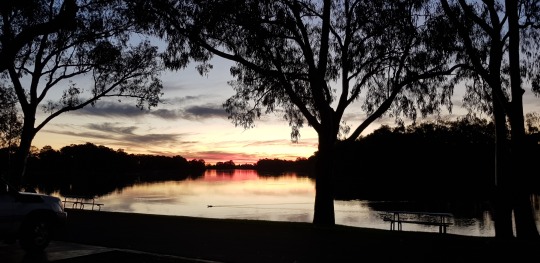
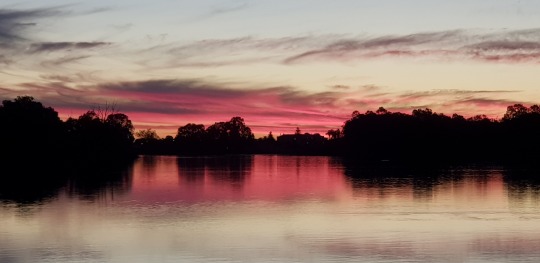
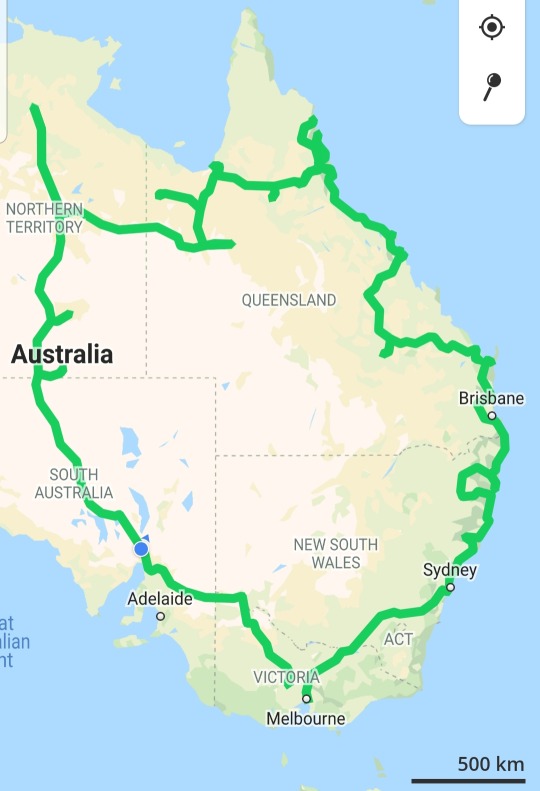
But this picture says it all...and for sure we'll be back.
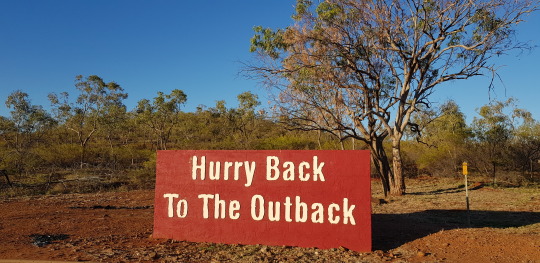
1 note
·
View note
Text
Alot of sun in Port Augusta
Was super impressed to go see part of the amazing solar Sundrop farm. The solar power tower system consists of more than 23,000 mirror heliostats over a 51,500m² solar field reflecting the light up on to a 127 metre solar tower. This farm is the future, desalinating local sea water to irrigate, all powered by the sun in the most harshest of landscapes. The photo just shows one of the massive glass houses which supply Coles with their truss tomatoes. Exciting future.
PS there is not much else to see in Port "Agutter" - naughty Sally.
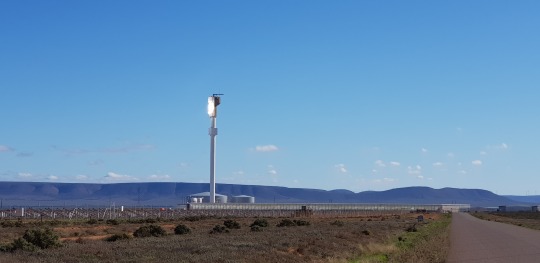

https://www.coles.com.au/whats-happening/aussie-producers/the-miracle-of-solar-powered-perfect-tomatoes
0 notes
Text
Happy Birthday @ Woomera
It’s a bit of a sad ghost town, the Americans when posted there saw it as a hardship posting. Woomera is a large Australian Defence Force aerospace and systems testing range covering an area of approximately 122,000 square kilometres in the centre of Australia, basically in the middle of nowhere, much like the Desert Rd in NZ.
Although the facility is closed to the public the village is open to visitors.
In its hey days, from 1949 to 1971, the population swelled to 7,000 and they enjoyed the bowling alley, theatre, swimming pool etc. Now...well...it’s like a time warp from the 60’s with most of facilities in the village closed but all very clean and tidy.
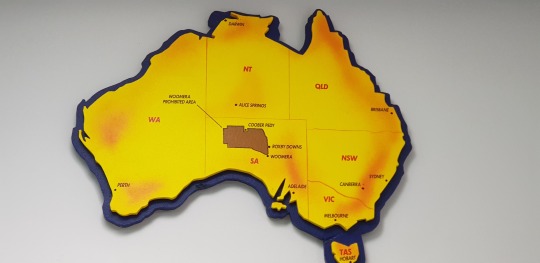
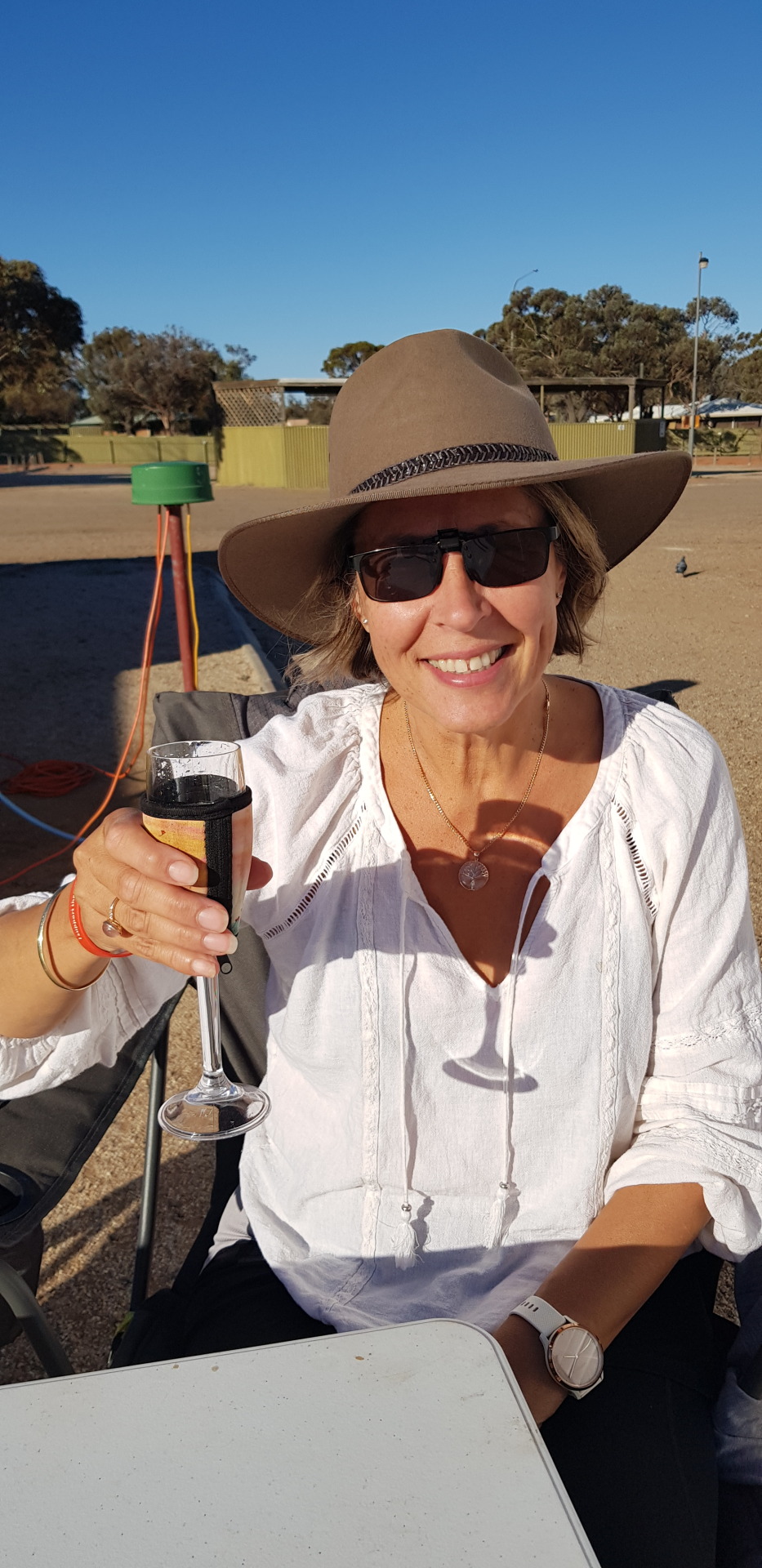
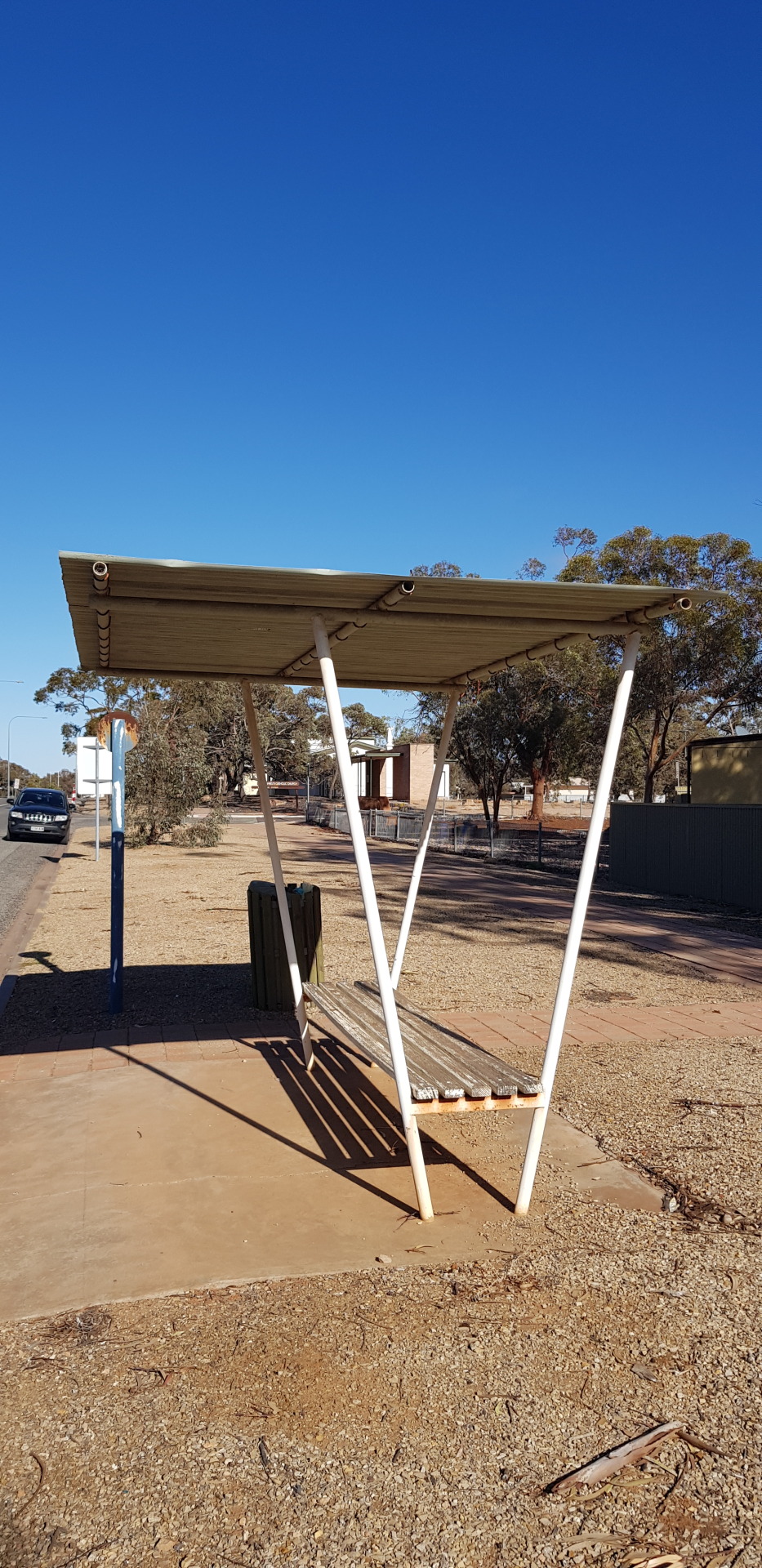
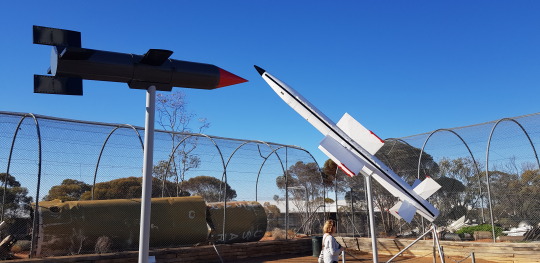
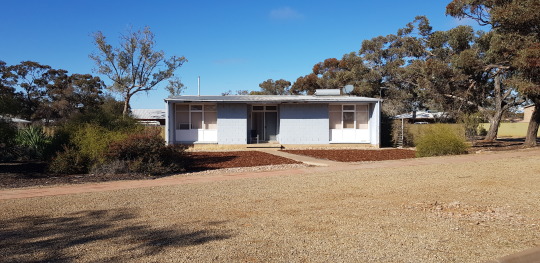
1 note
·
View note
Photo
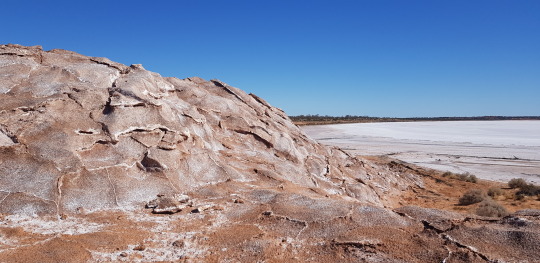
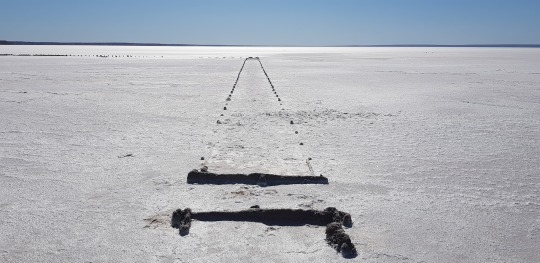
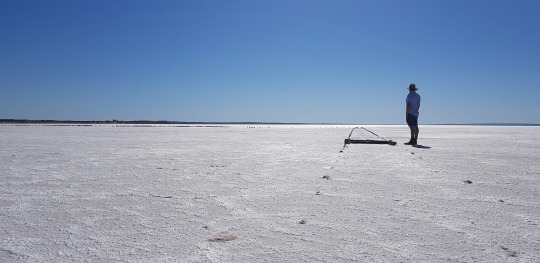
Lake Hart, South Australia, near Woomera is one of Australia’s most accessible salt lakes but now stands abandoned but would be an awesome site for a movie.
It was the site of salt mining up until the 1930s and the salt was taken by rail on the Trans Continental Line to Sydney for domestic and industrial use. It was supposed to be twice as 'salty' as other salt, and free of gypsum. This photo on the left is quite surreal, 7,000 tons of salt in bags left, dissolved and disintegrated, left in situ since 1931 in the sun (and occasional rain).
0 notes
Text
Bloomin' beautiful centre

Officially, there is no centre of Australia. This is because there are many complex but equally valid methods that can determine possible centres of a large, irregularly-shaped area - especially one that is curved by the earth's surface.
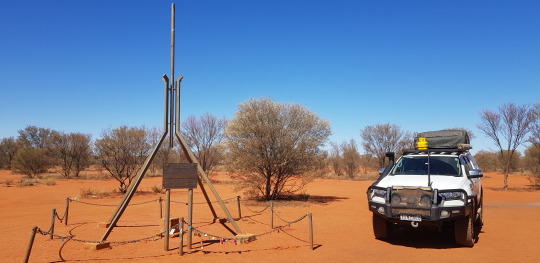
The Lambert Gravitational Centre was calculated using data from 24,500 high-water marks along Australia's long coastline, and once the point was located on a map, it was commemorated with this monument, a scaled-down replica of the distinctive flag pole found on top of the Commonwealth Parliament House in Canberra. Going to the Lambert Centre sounded like a great way to spend a 280km round trip from the Kulgera Road house, the first and last pub in the NT (I guess depending on which way you enter the NT!).
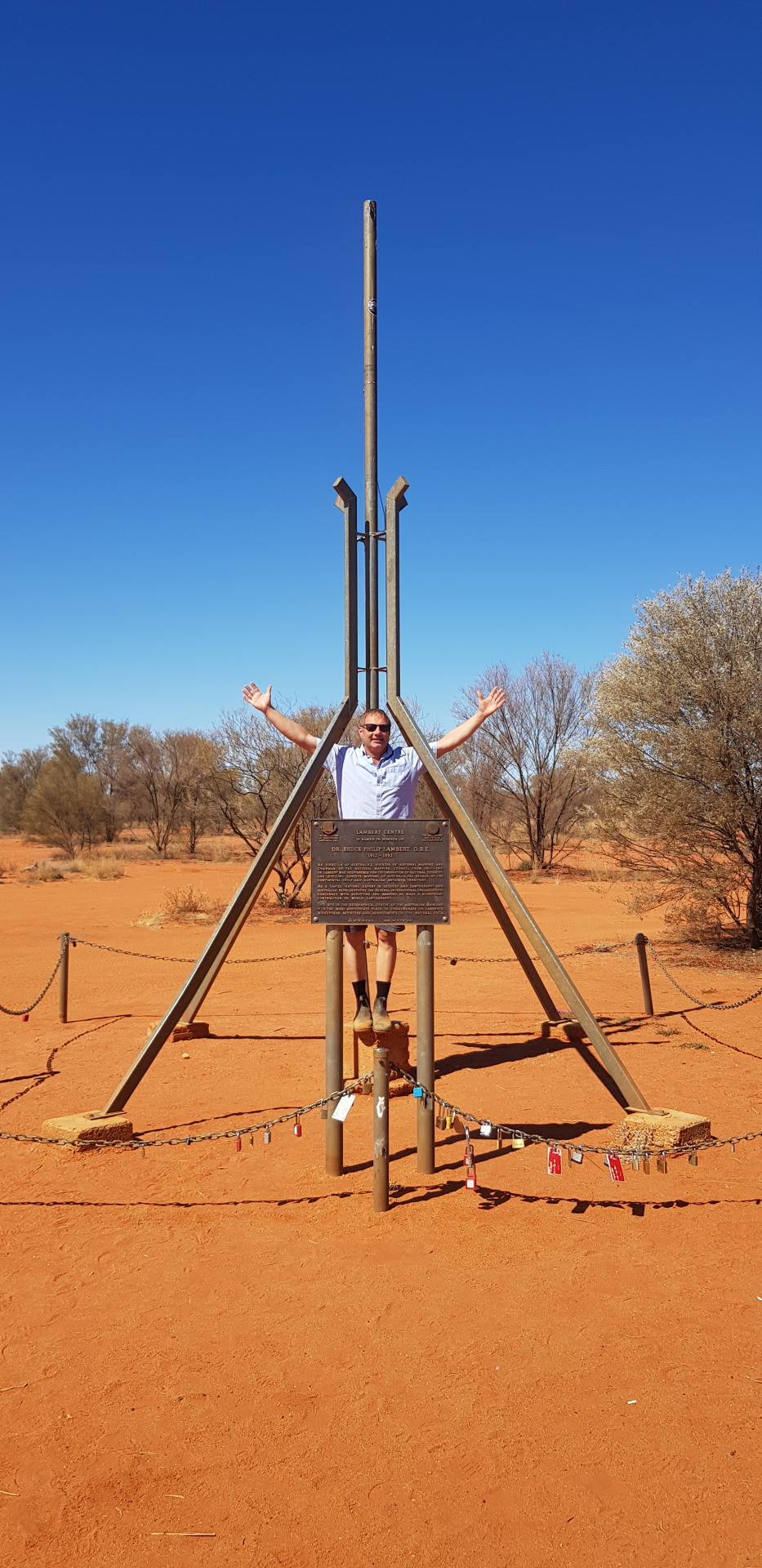
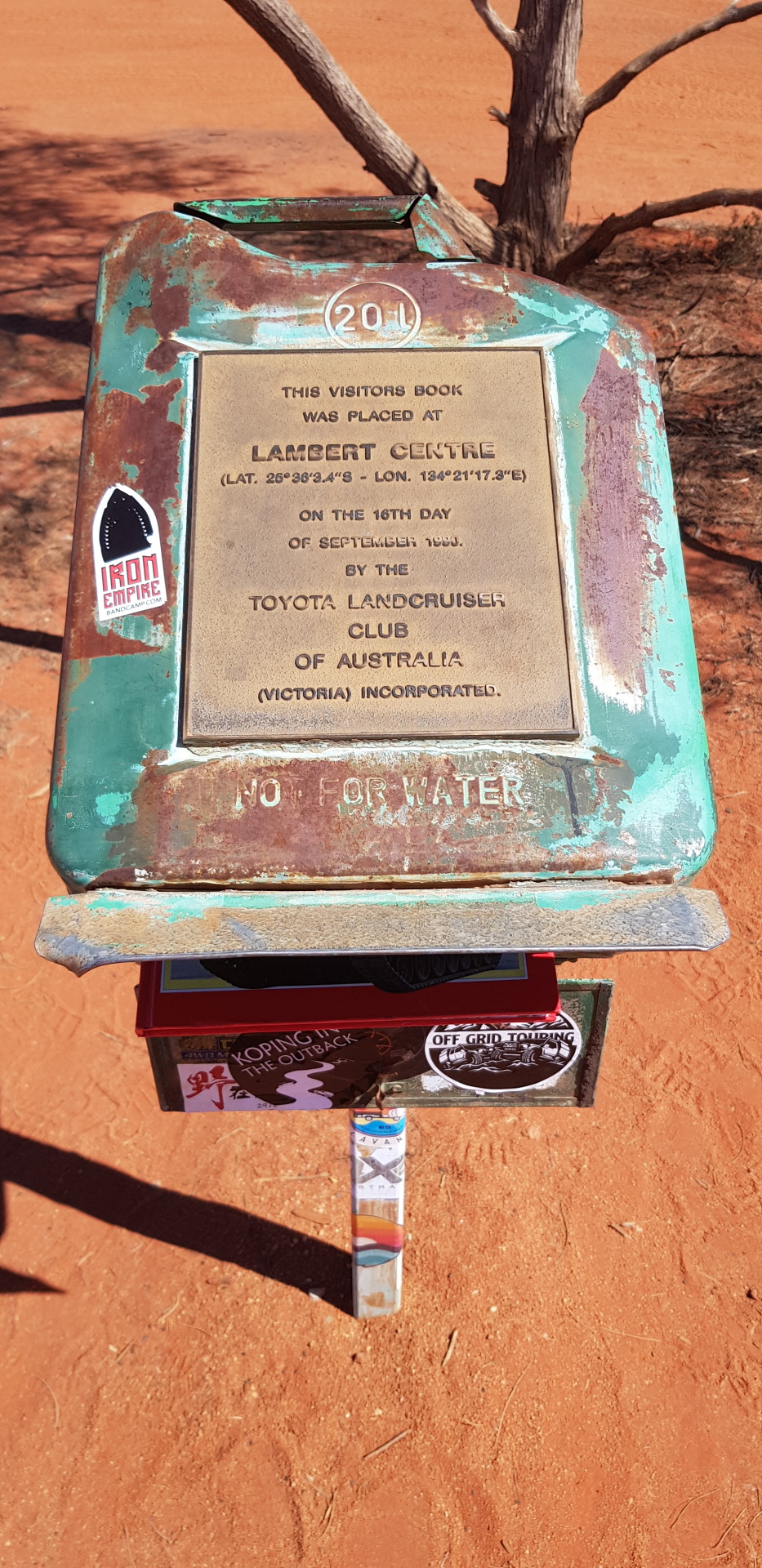
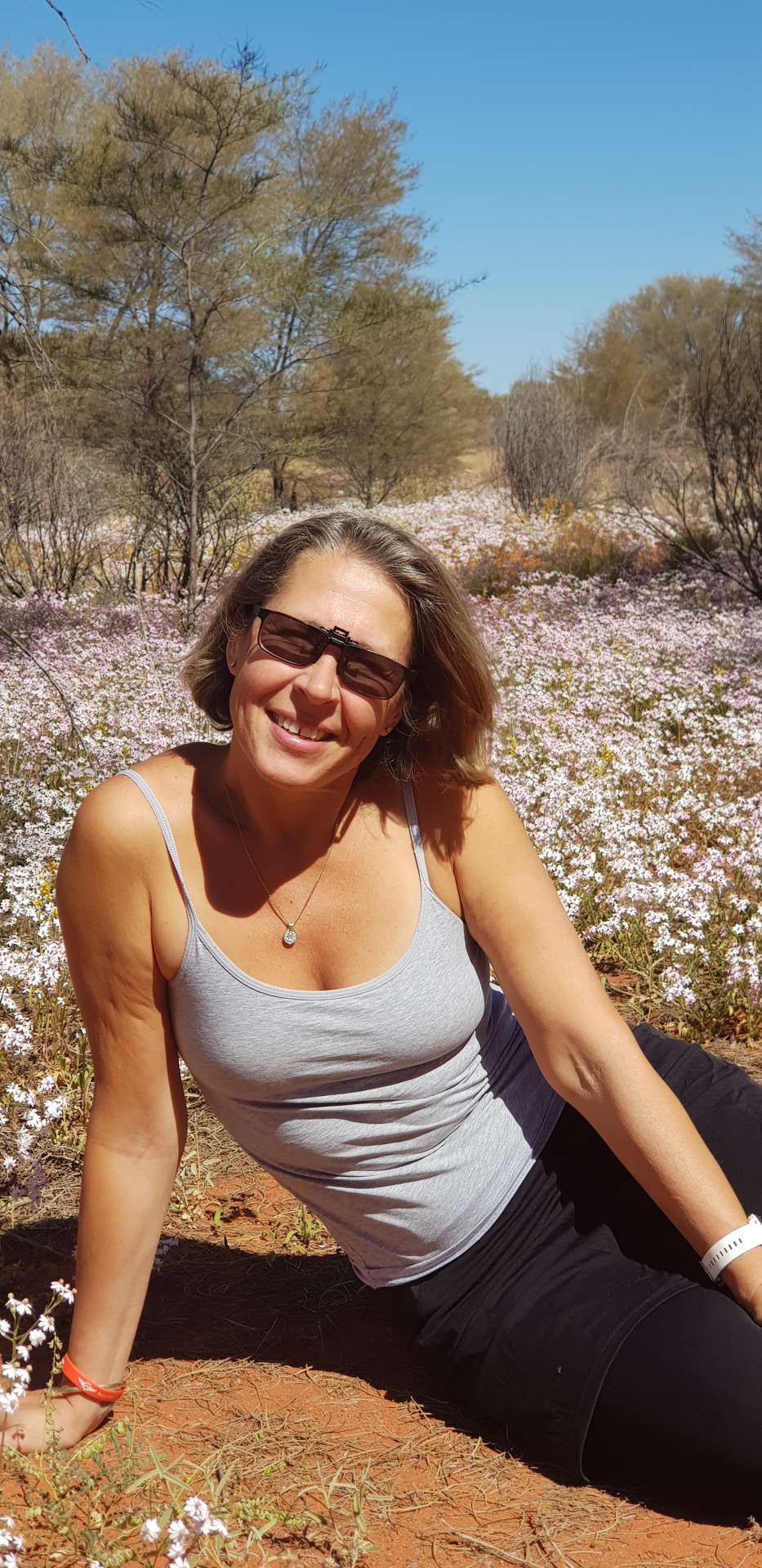
But what was a gem we found, for a hundred kilometres, the vast array of wild flowers, not what we were expecting in the centre of Australia - just spectacular.
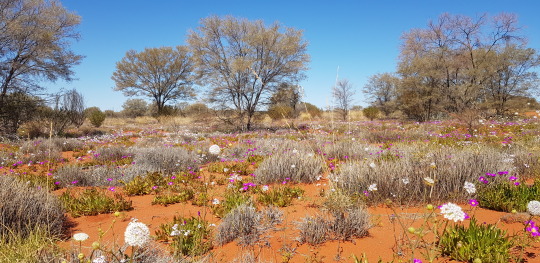
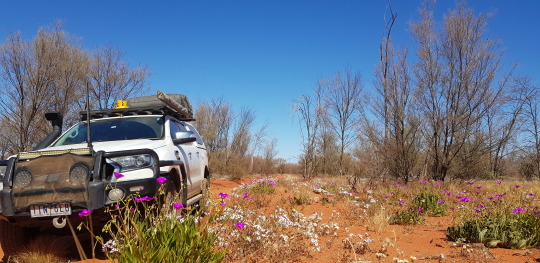
The
1 note
·
View note
Text
The Great Impact
The Henbury meterorite site near Ghan, formed some 4,700 years ago, close to the SA/NT border, has 12 craters, 4 large and 8 smaller ones. The four largest craters were each formed by a piece of the iron filled meterorite about the size of a 200 litre fuel drum. It was fun fossicking about musing over all the rock shot out wondering if we were standing on smaller pieces of the meterorite but alas no.
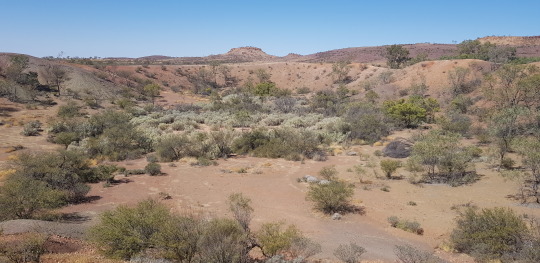
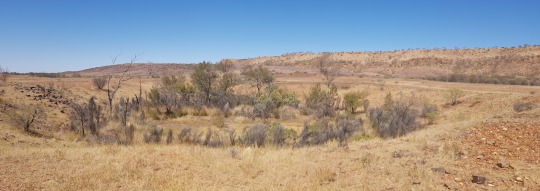
Thought this broken rock reminded me of Australia 😉
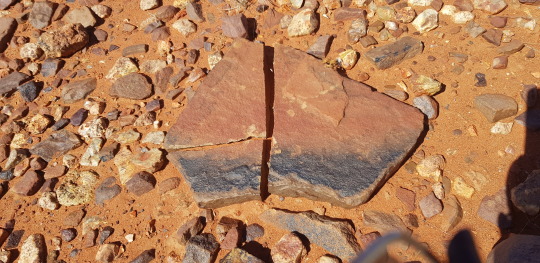
1 note
·
View note
Text
East Macs part 2
The Trephine Gorge walk had us go up and over and through the gorge on the Ross River (another upsidedown one, see below) with healthy River Red Gums lining the banks and the slopes studded with the occasional Ghost Gum as a stark contrast.
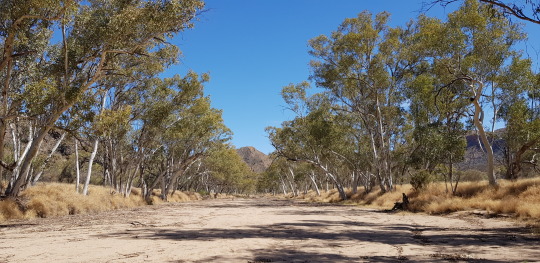
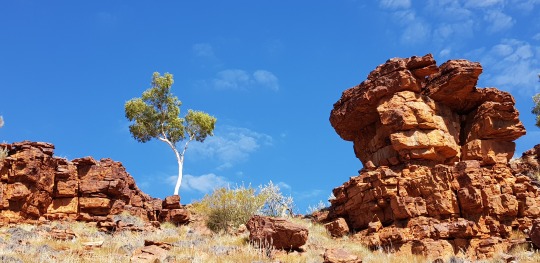
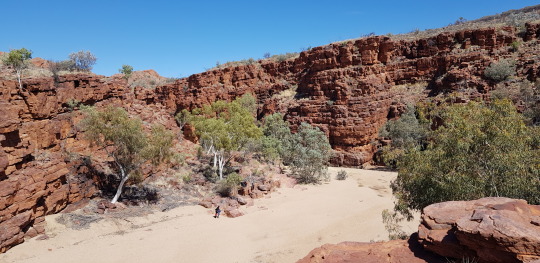
Then another 4WD out to Arltunga Historic Reserve the home of Central Australia's first alluvial gold rush in 1887. Starting with 30 miners it grew to a town supporting 300 at the peak but it was HARD life. Accessed via a 600km walk from Oodnadatta they had little water and could grow no veges. From the rubbish one suspects they lived on tinned sardines, tobacco and whiskey! With little water imagine dry blowning the sand to find the gold. Later they mined and the SA govt built a battery in 1913 but it was short lived. Makes for some very interesting ruins, some of which have been restored true to form from old photos.
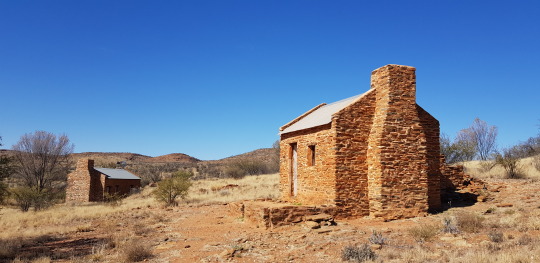
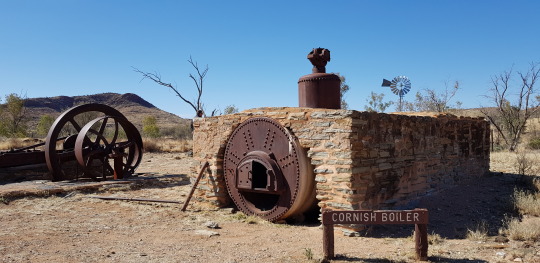
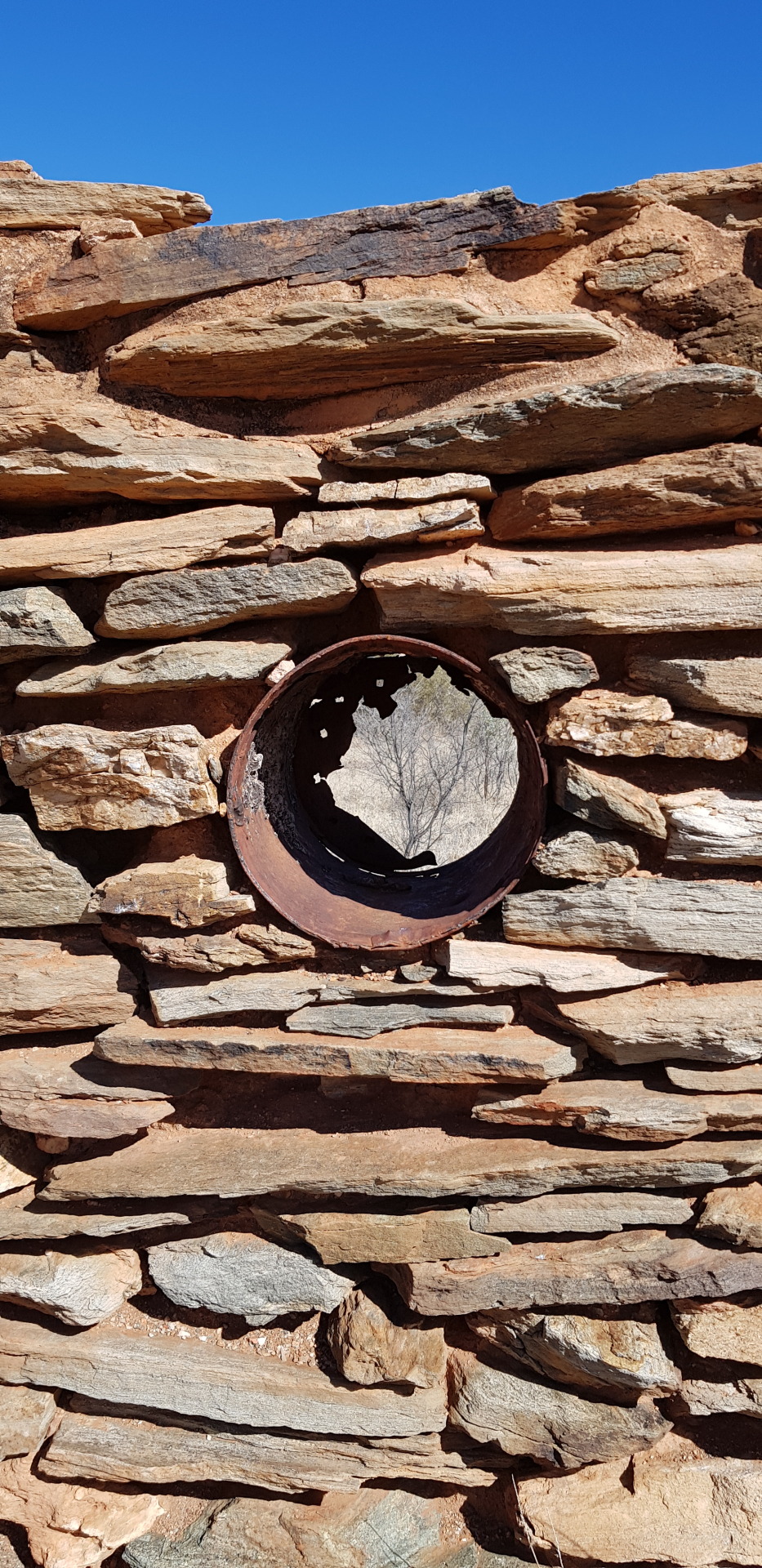
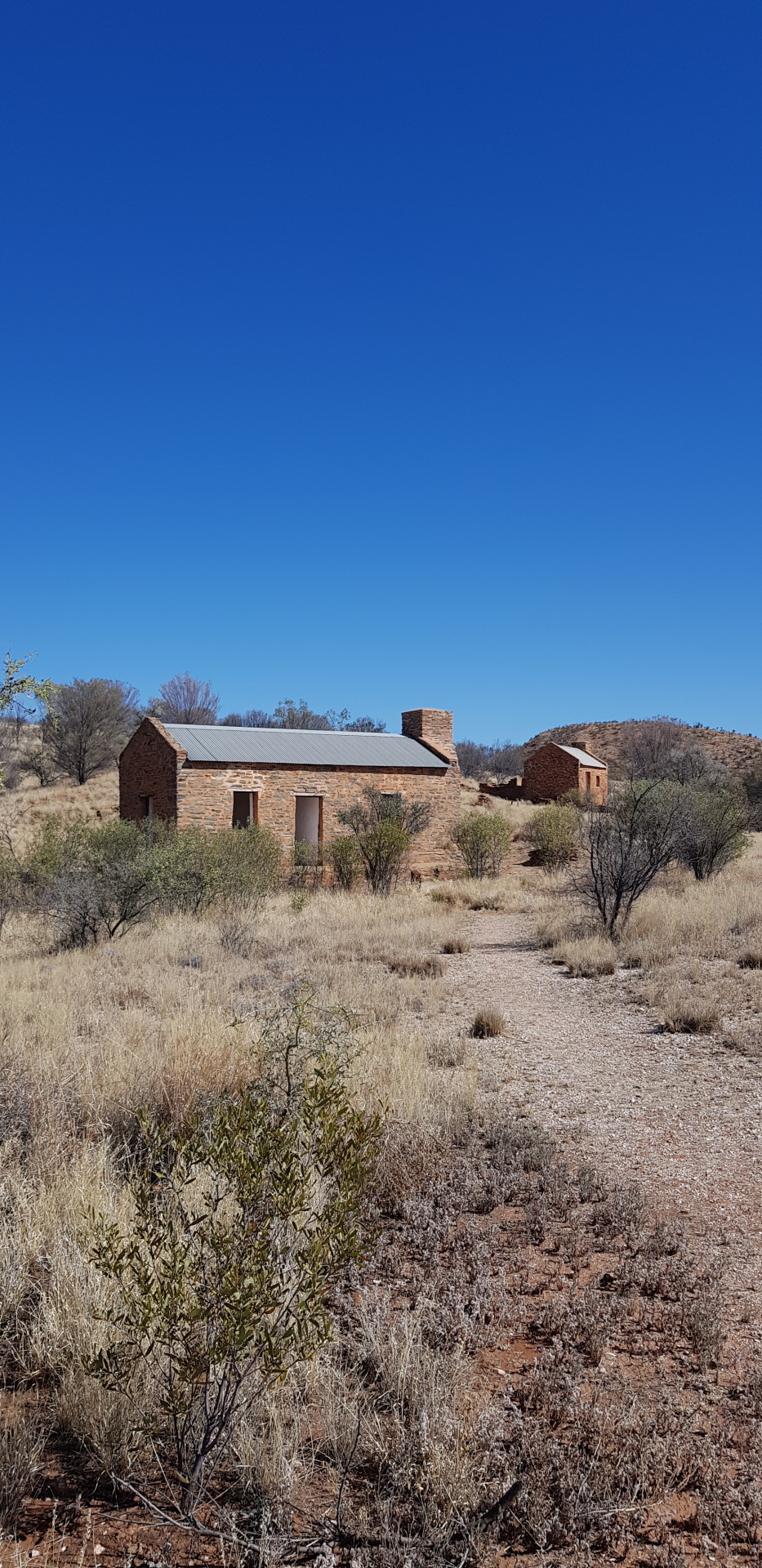
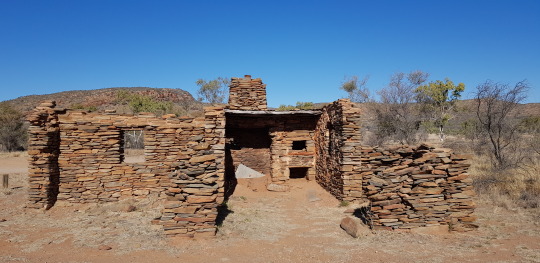
1 note
·
View note
Text
East McDonnells, no poor cousin, part 1
During our last foray up here we spent all our time out the West MacDonell Ranges but this time we went out to Ross River Resort on the East side and believe us they are no poor cousin.
Started with a 7.8km walk between Jessie and Emily gaps with two interesting sites; a new mini series being filmed “True Colours” and a strange line of white things in the far distance, some 8km away. Turns out storage for 300+ jet liners due to covid, what a site!
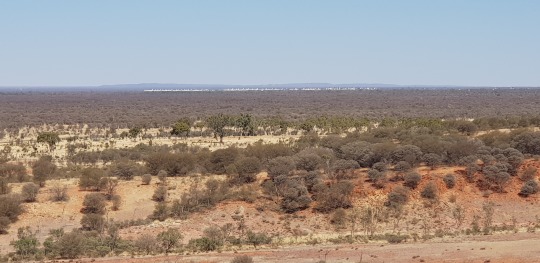
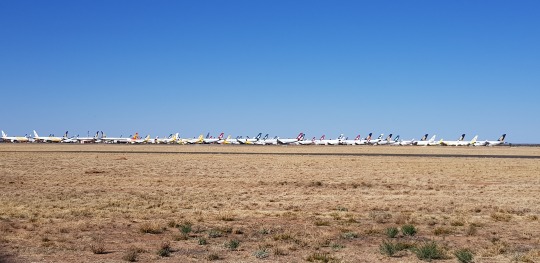
We did a number of walks and found some amazing sites. N’Dhala Gorge to see amazing petroglyphs which were pounded and pecked out of the stone by the Arrernte the custodians of the land, quite different form of art work.
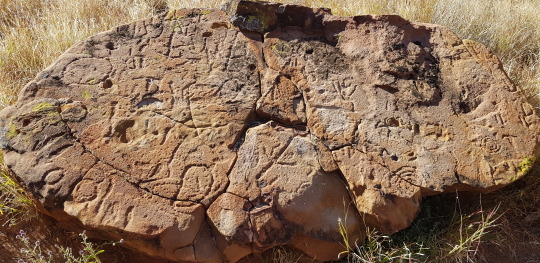
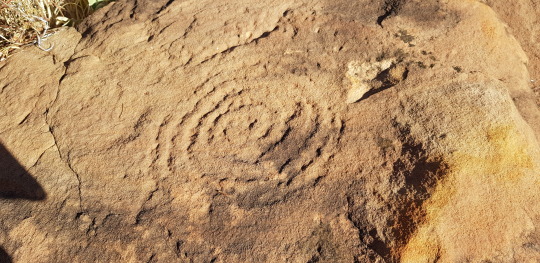
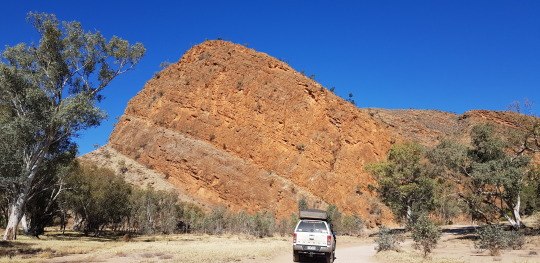
Then the Chain of ponds walk offered a great scramble over the gorge floor after an invigorating 4WD past pockets of water in this dry wilderness.
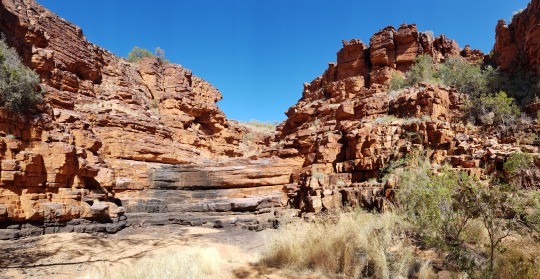
Off next to the see Corrobee Rock and then the largest and oldest Ghost Gum in Australia. Both just stunning against the landscape.
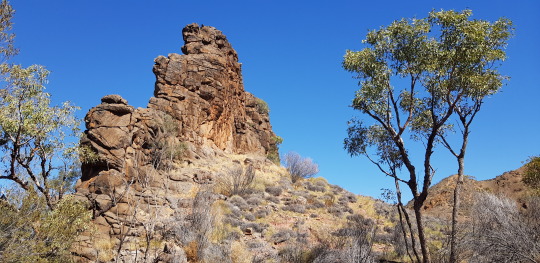
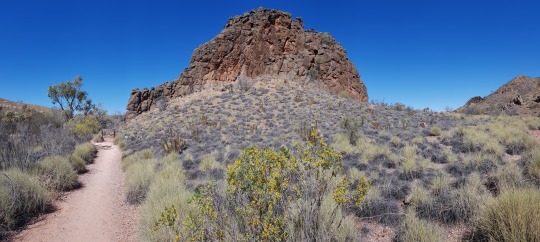
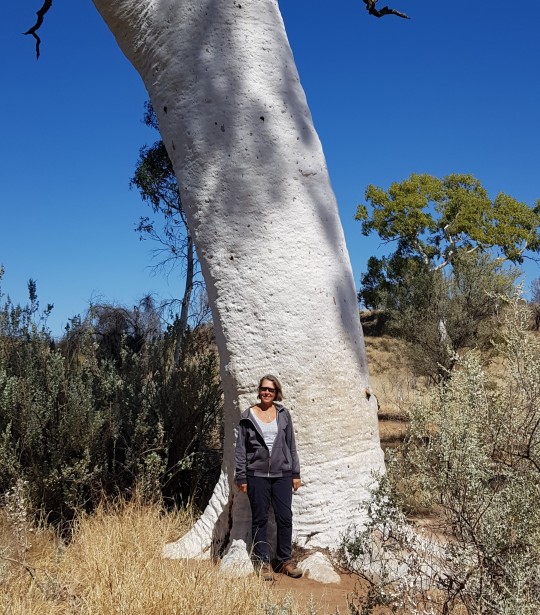
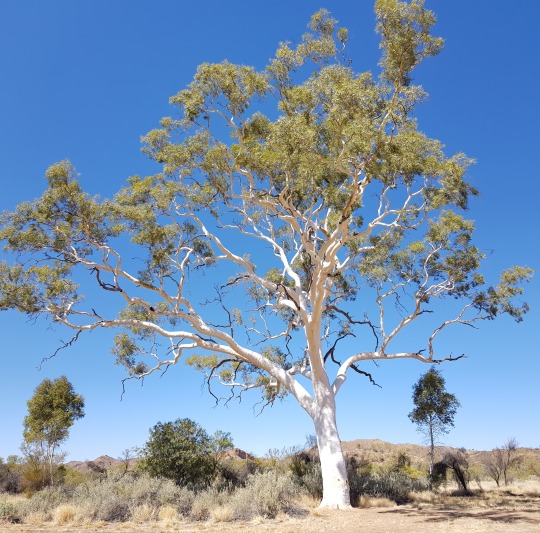
.... part 2 to follow
1 note
·
View note
Text
Alice
Once Stuart, then The Alice, now Alice, Alice Springs has many names and is also not short of is own social problems. Its a shame really.
It was great to visit the RFDS. Wow what a service. Hearing the testimonies brought tears to my eyes. Because I love facts here we go: 320,000 patient contacts last year, 79 planes which last year travelled the equivalent of 34 return trips to the moon!! Here were the live planes working at the time I was there. Check out the live link below to see current transports which average 1,000 per day.
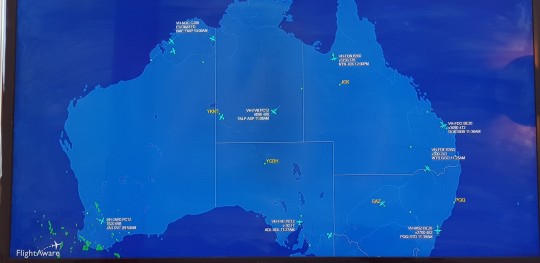
The botanical gardens were very arid but Michael was excited to find some rare plants. I particularly enjoyed seeing the black footed wallabies and this wild fig. It fruits prolifically on stoney outcrops.
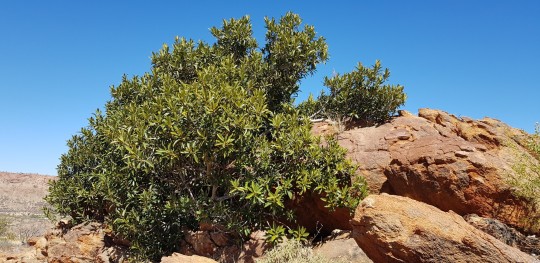
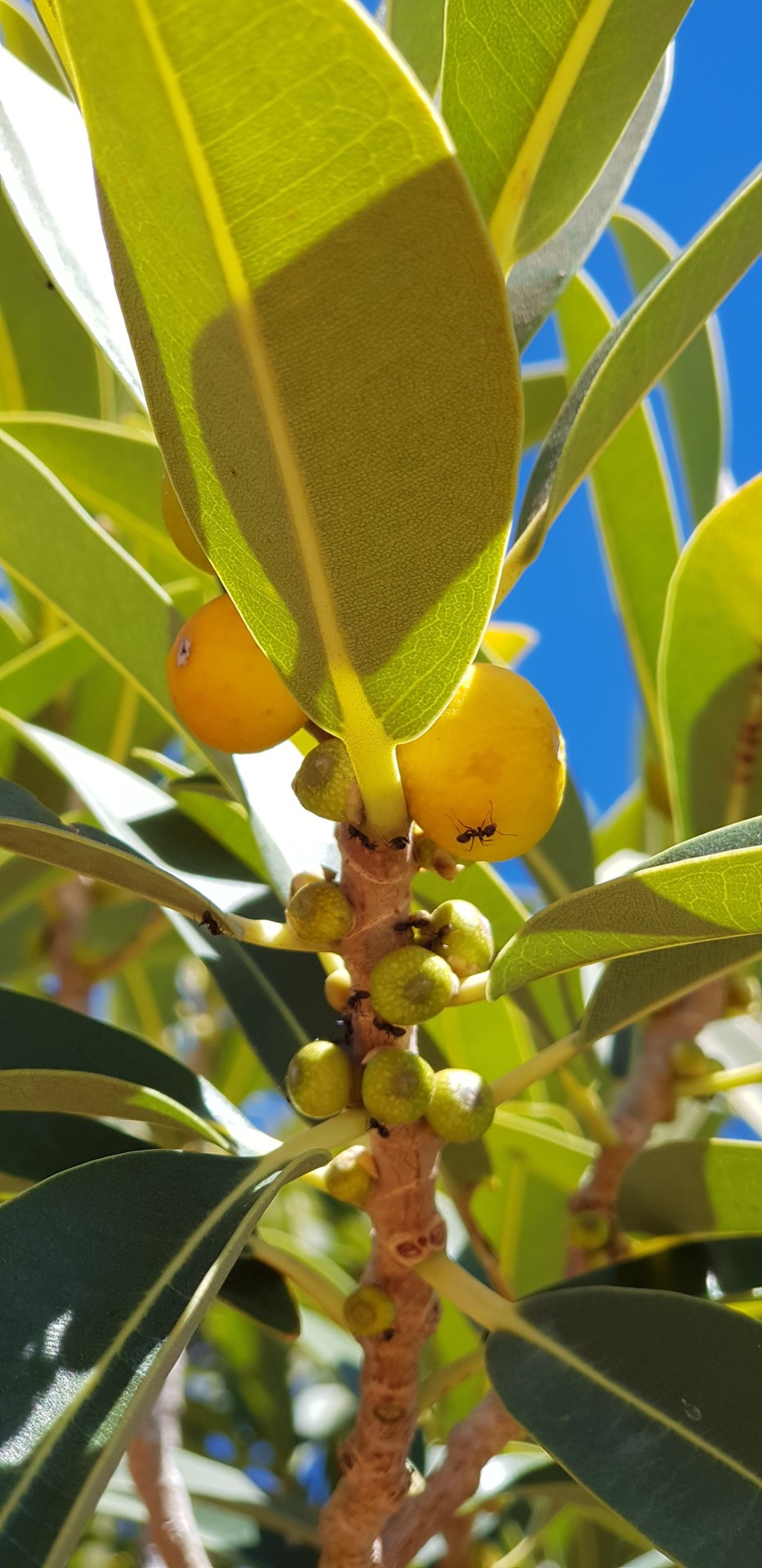
The Gap at Alice Springs, gateway to the Red Centre.
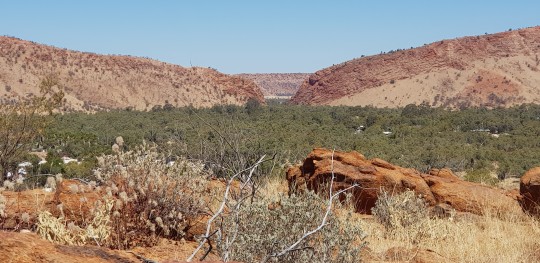
Had to have a camel ride as they are just such awesome creatures. No one really knows how many are still out there, maybe a couple of hundred thousand, in the bush but they have adapted well. Not original but are called; cows, bulls and calves.
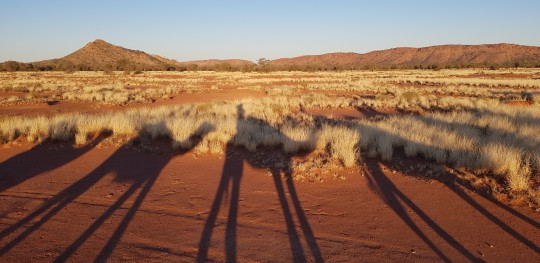
Just love the way they screw up their faces.
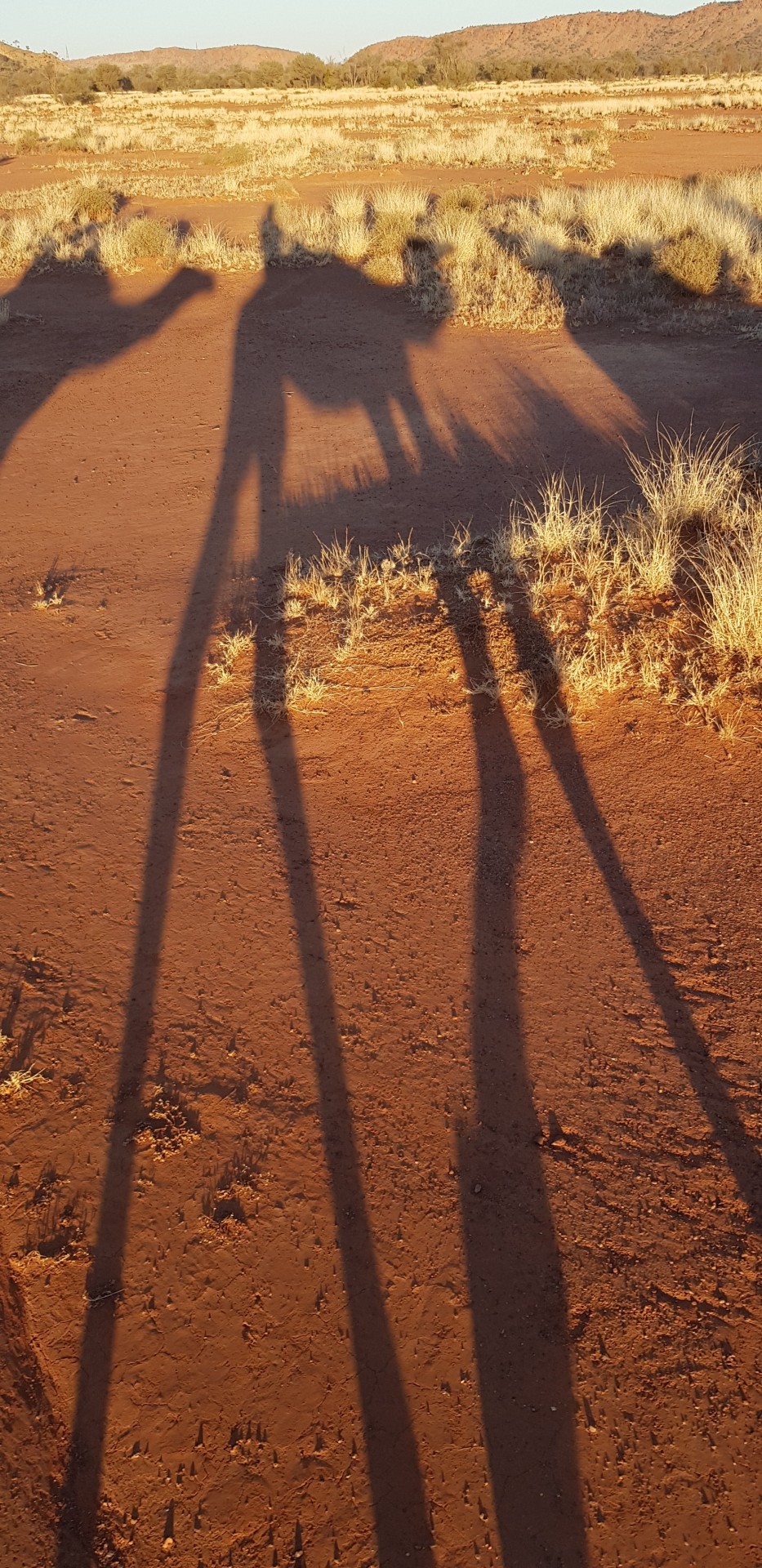
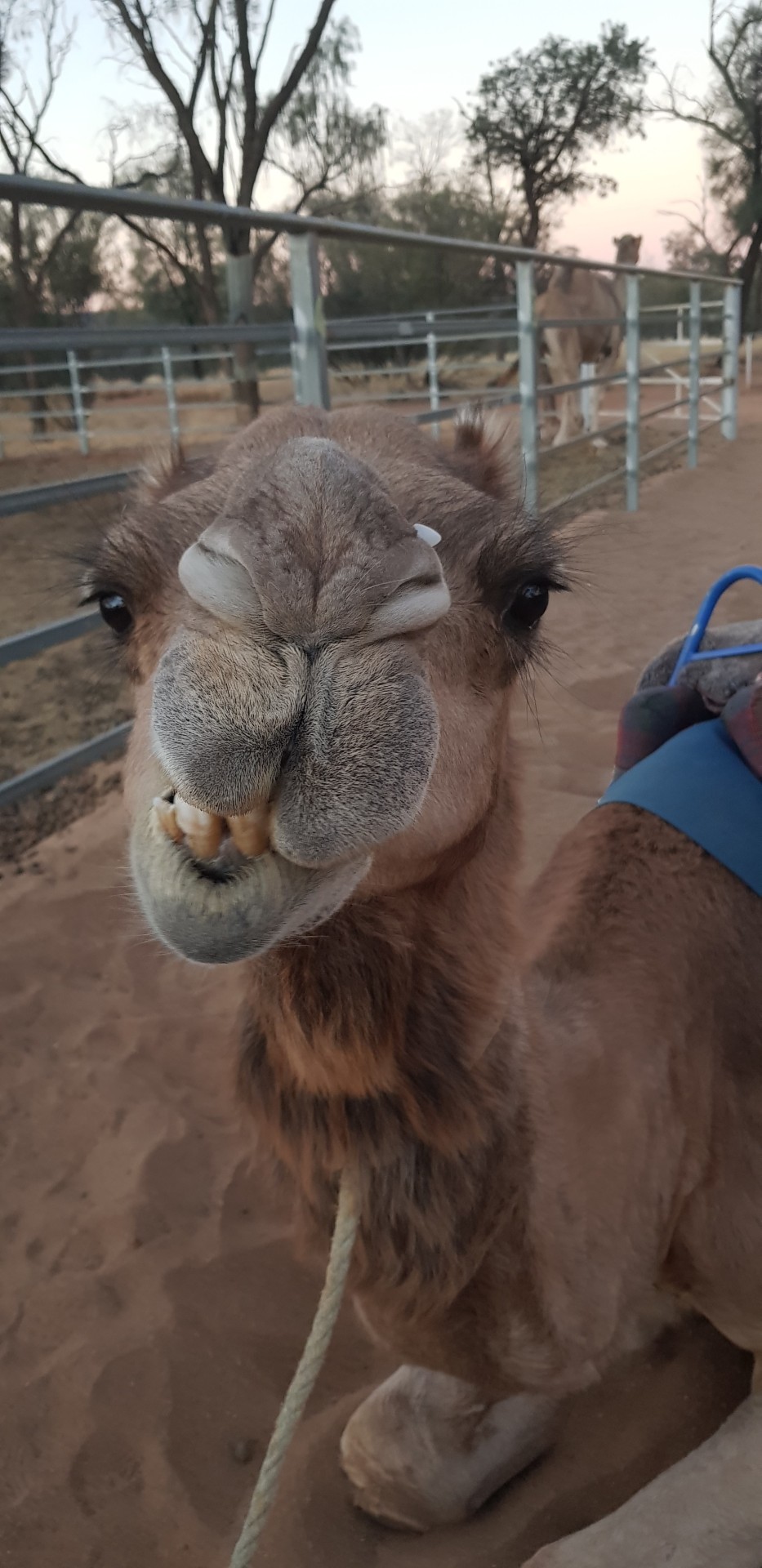
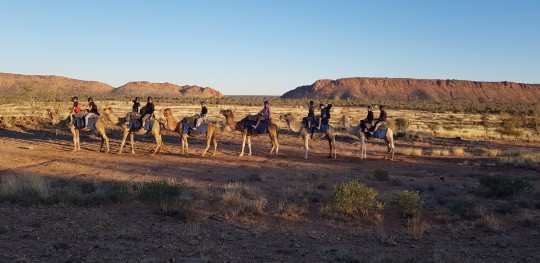
1 note
·
View note
Text
Devils Marbles
Another, but welcome, revisit to a previous camping spot. This ancient granite boulder site never fails to amaze. Although grey granite this red soil which coats everything and turns your heels red has done the same here and to spectacular effect.
The Devils Marbles are a sacred site known as Karlu Karlu in the language of the traditional owners the Warumungu people. Formed over millions of years, they continue to crack and erode making for a unique view each time you visit.
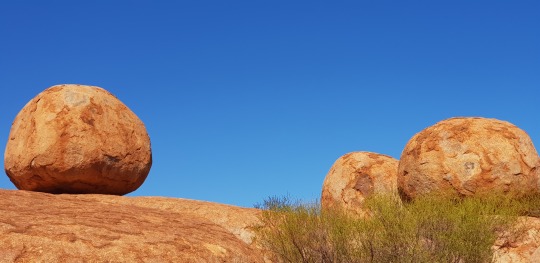
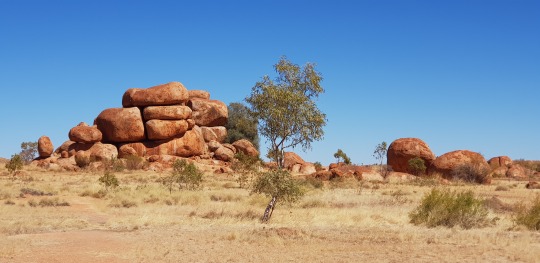
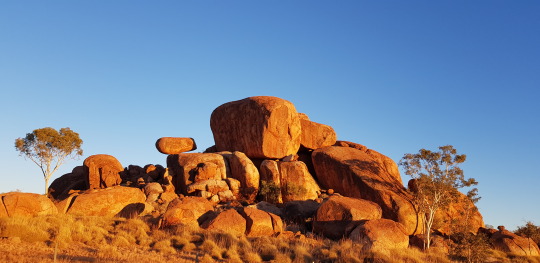
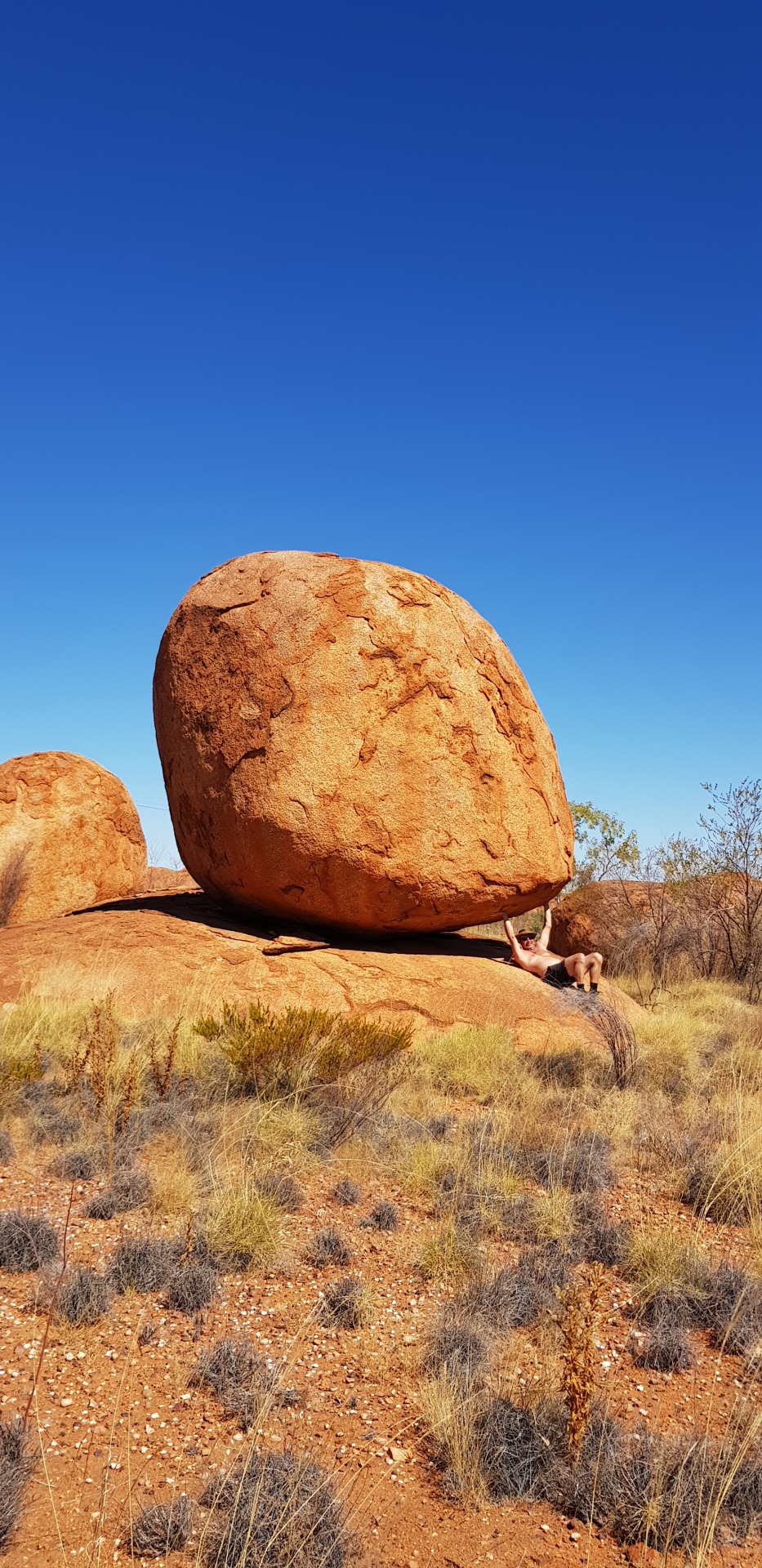
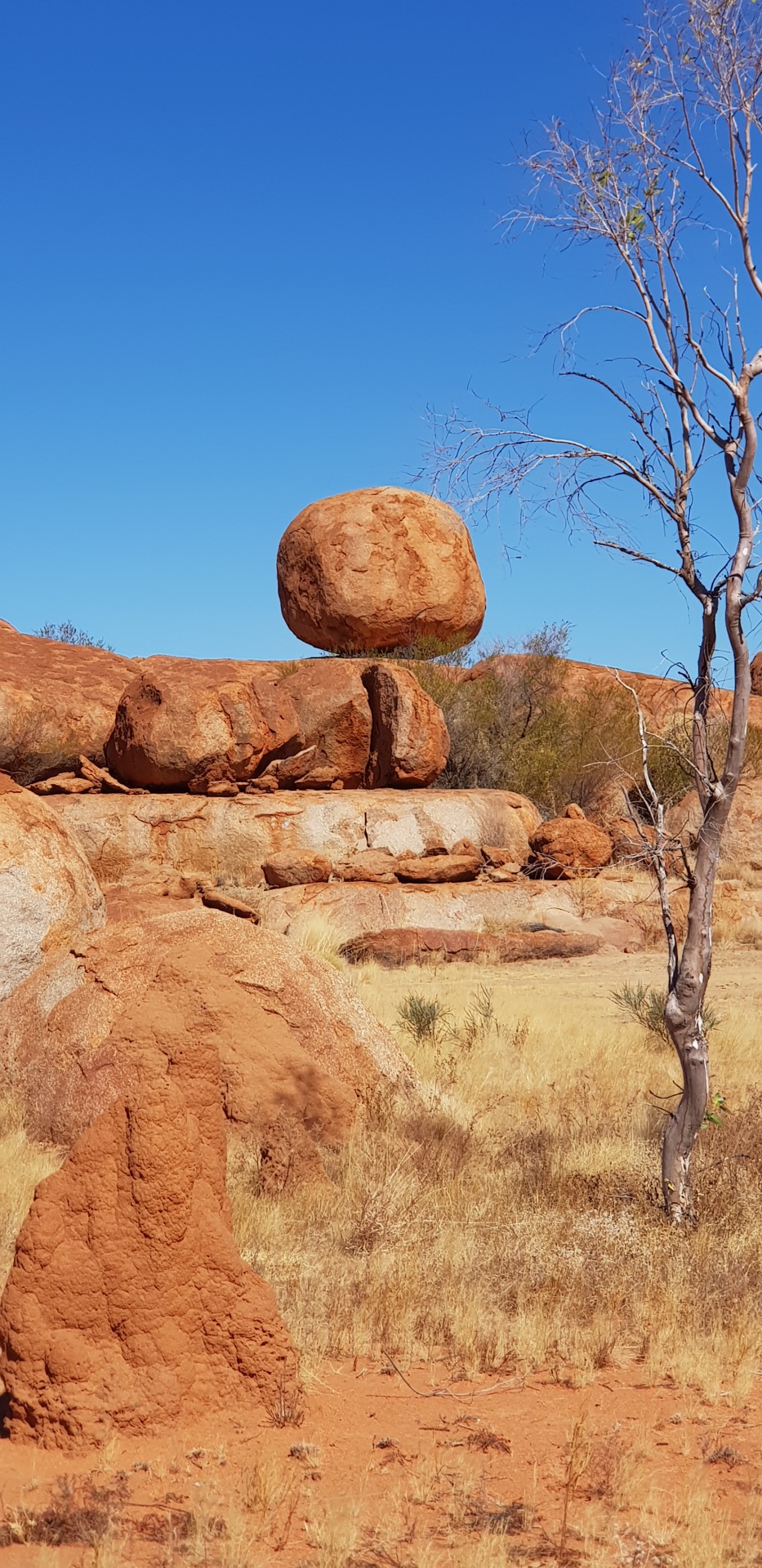
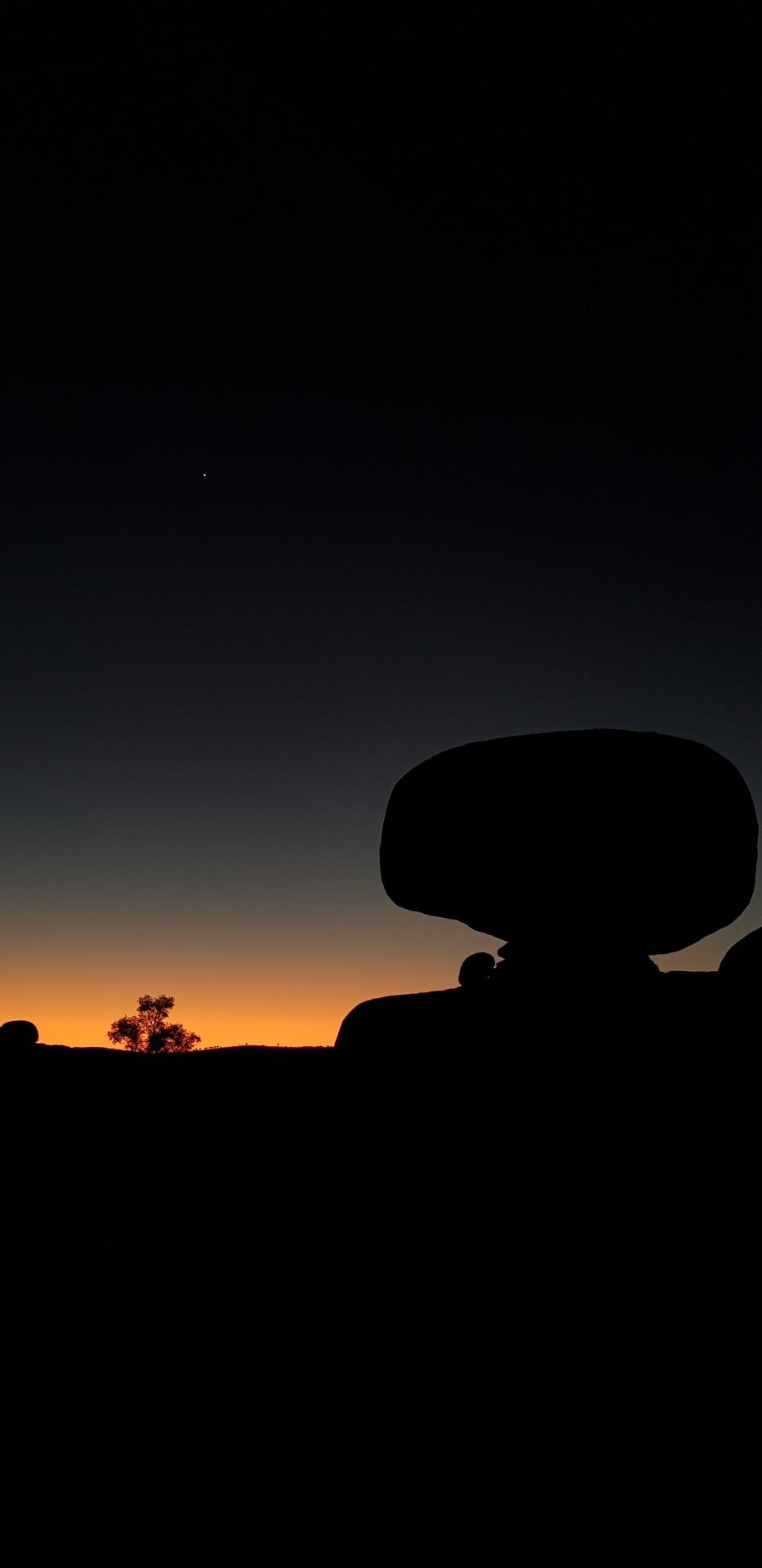
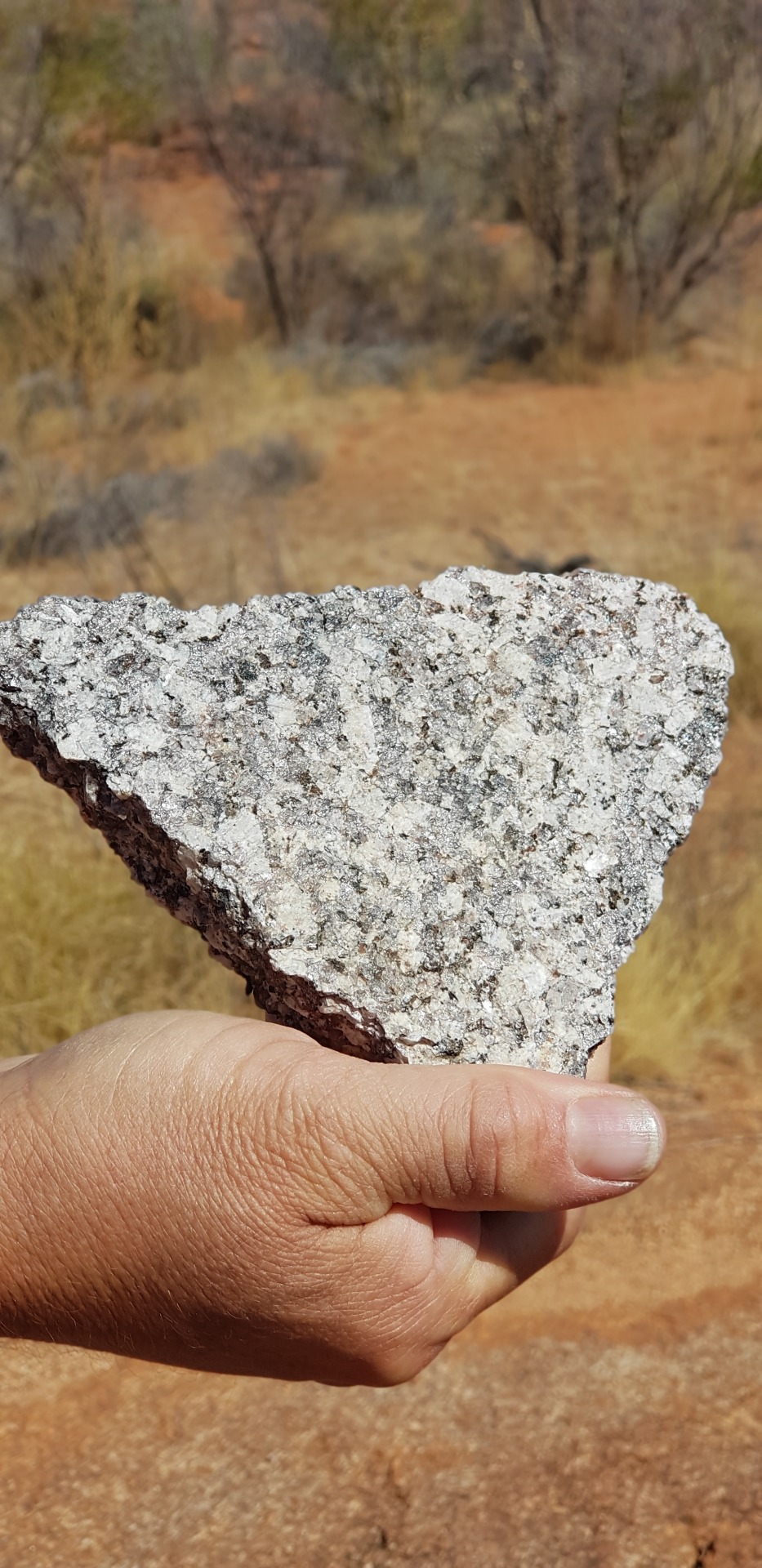
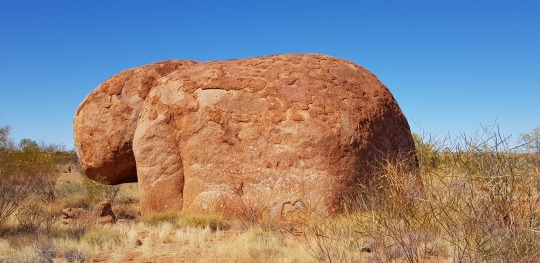
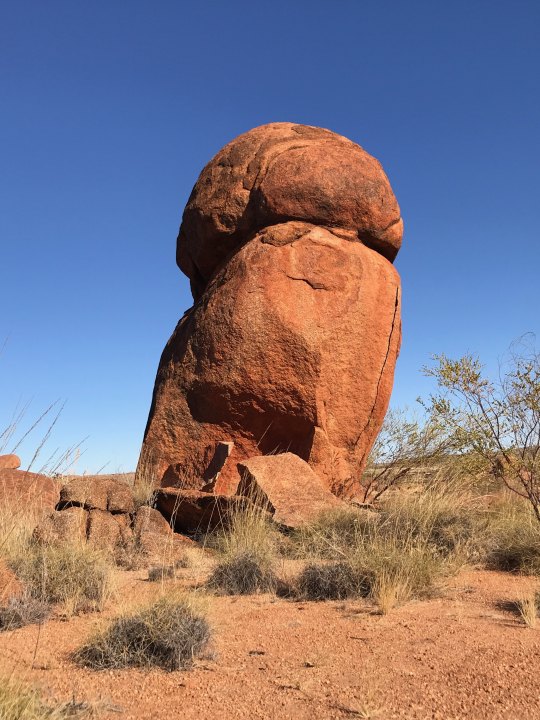
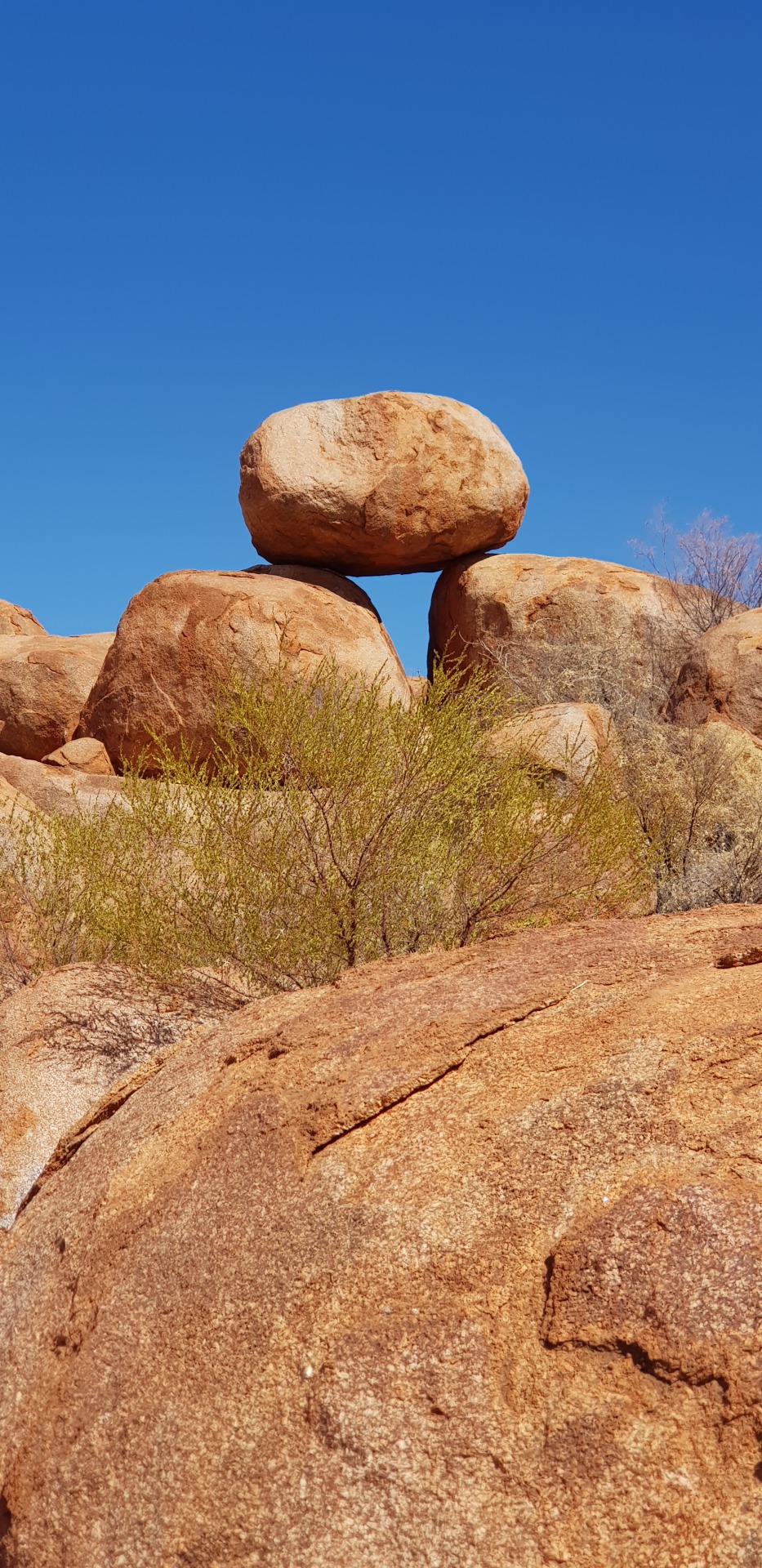
1 note
·
View note
Text
Crackin' time at Mataranka
Mataranka, known as the capital of the Never Never due to the We of the Never Never an autobiographical novel by Jeannie Gunn after living at the Elsey Station as the first white woman. Today over a million copies have been sold.
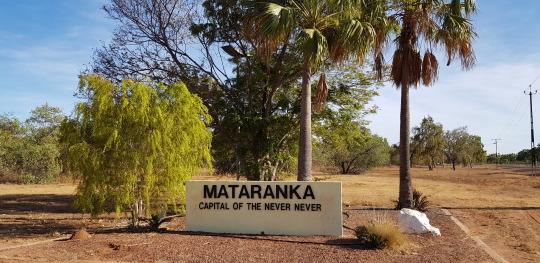
For tourists it is more famously known for the Mataranka thermal springs and Bitter Springs. We also took at bush walk out along the croc infested Roper river to Mataranka falls.
PS yes there was a croc trap complete with a dead chicken at the end of the 280m stretch of Bitter Springs which you float down in just to keep us safe!
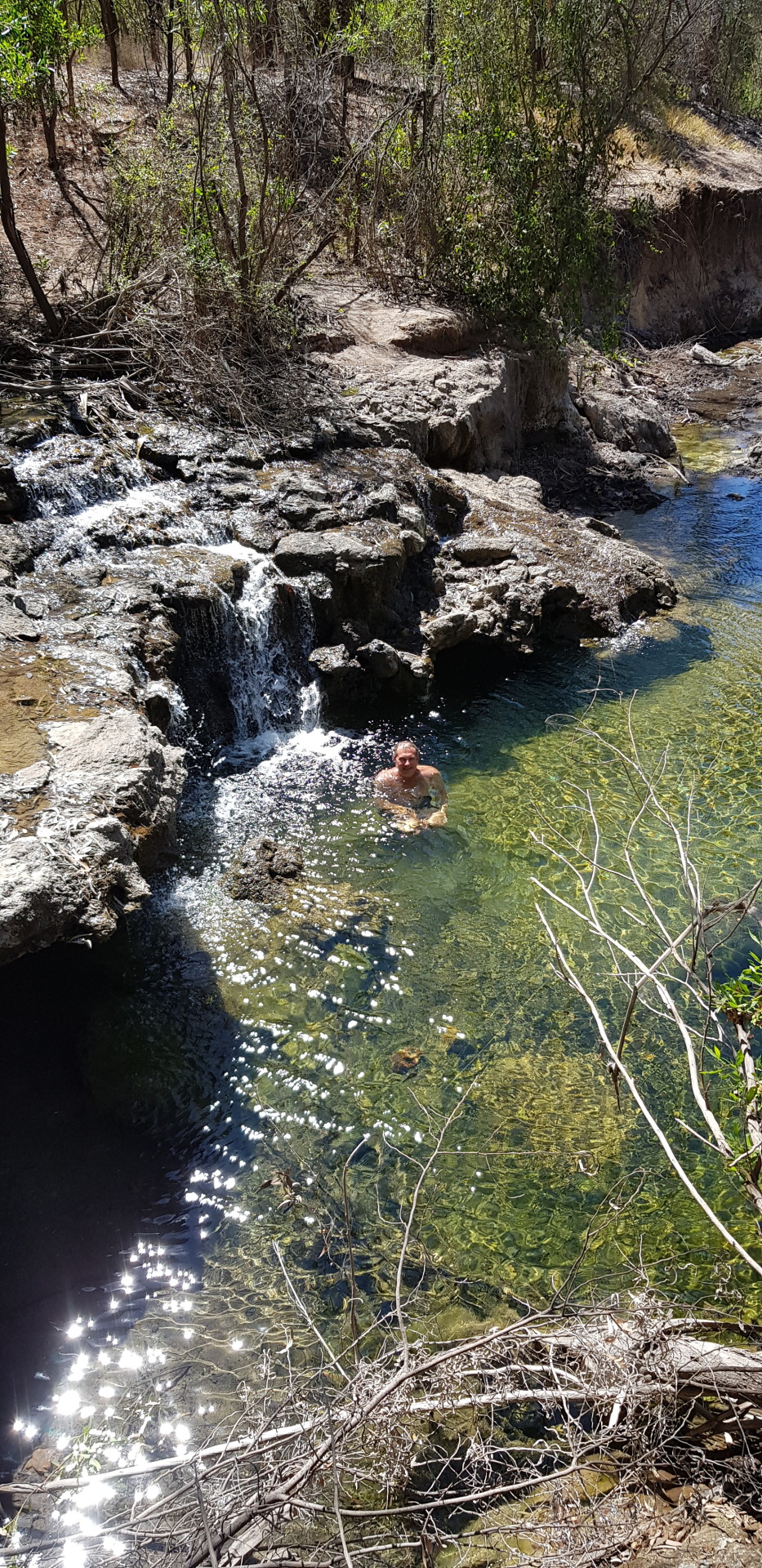
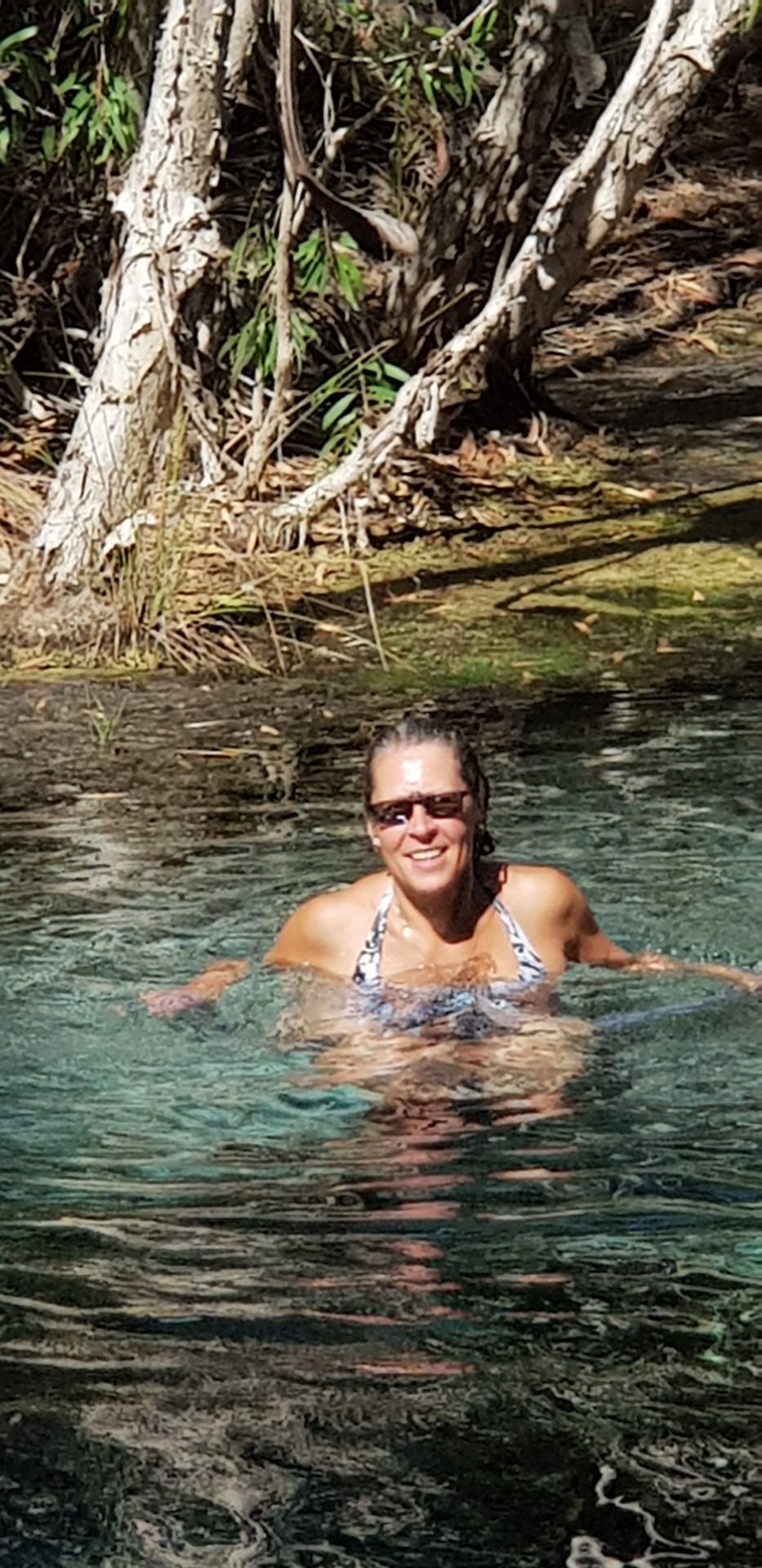
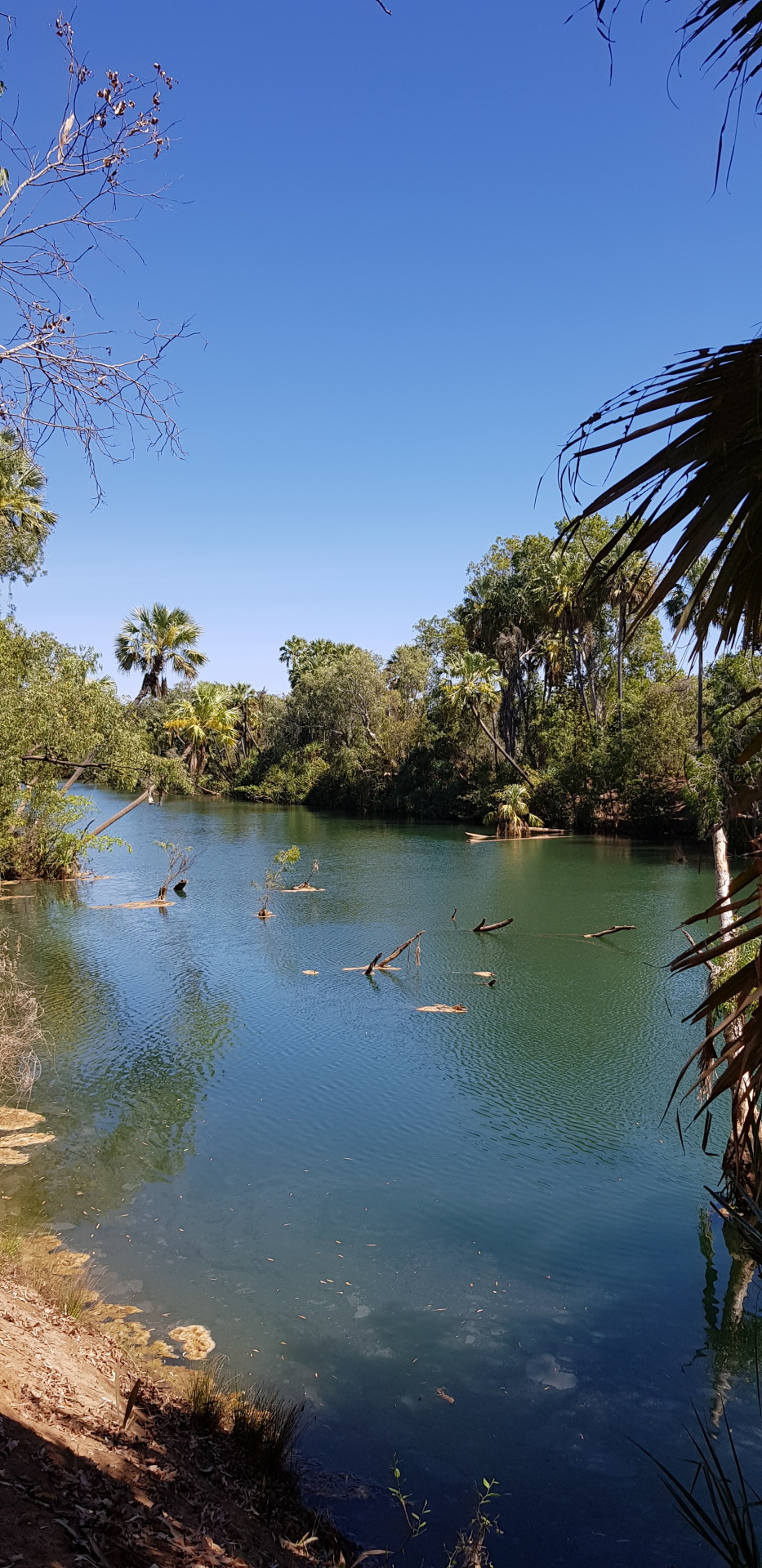
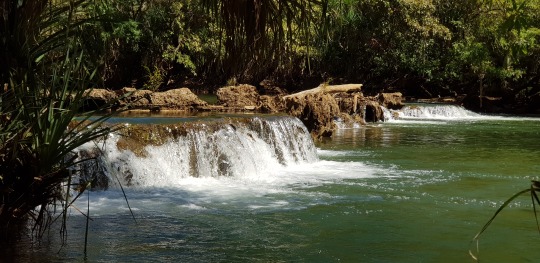
The evening entertainment was from a thoroughly entertaining young Guinness world record whip cracking champ; Nathan 'Whippy' Griggs.
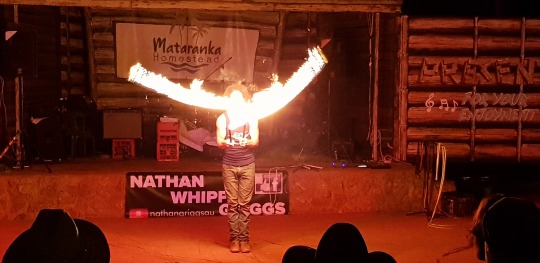
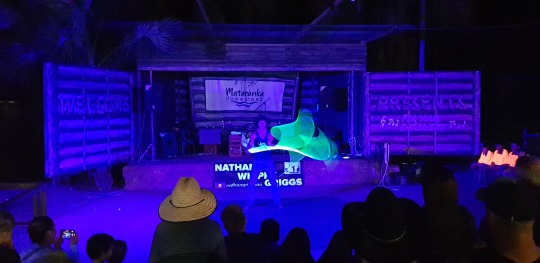
He’s so good, in fact, he can make his whip crack an almost unbelievable 697 times in one minute.
https://7news.com.au/the-morning-show/nathan-whippy-griggs-holds-five-guinness-world-records-in-whip-cracking--c-684612
Living and working in Mataranka he makes whips for around the world. Here is his 100m whip he cracked to get one of his world records.
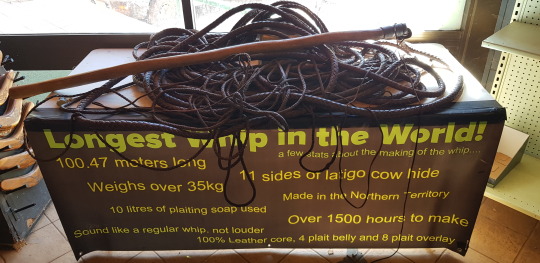
1 note
·
View note
Text
Banka Banka
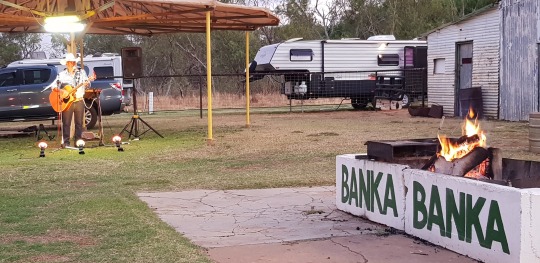
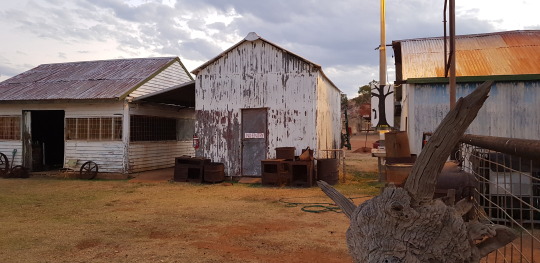
A station stay rrevisited from last time but a relaxing stay with a little good old country music and fire even though it was 36 degrees! Finally the air conditioner got a good run but felt bad as they only had enough power for six vans ☹
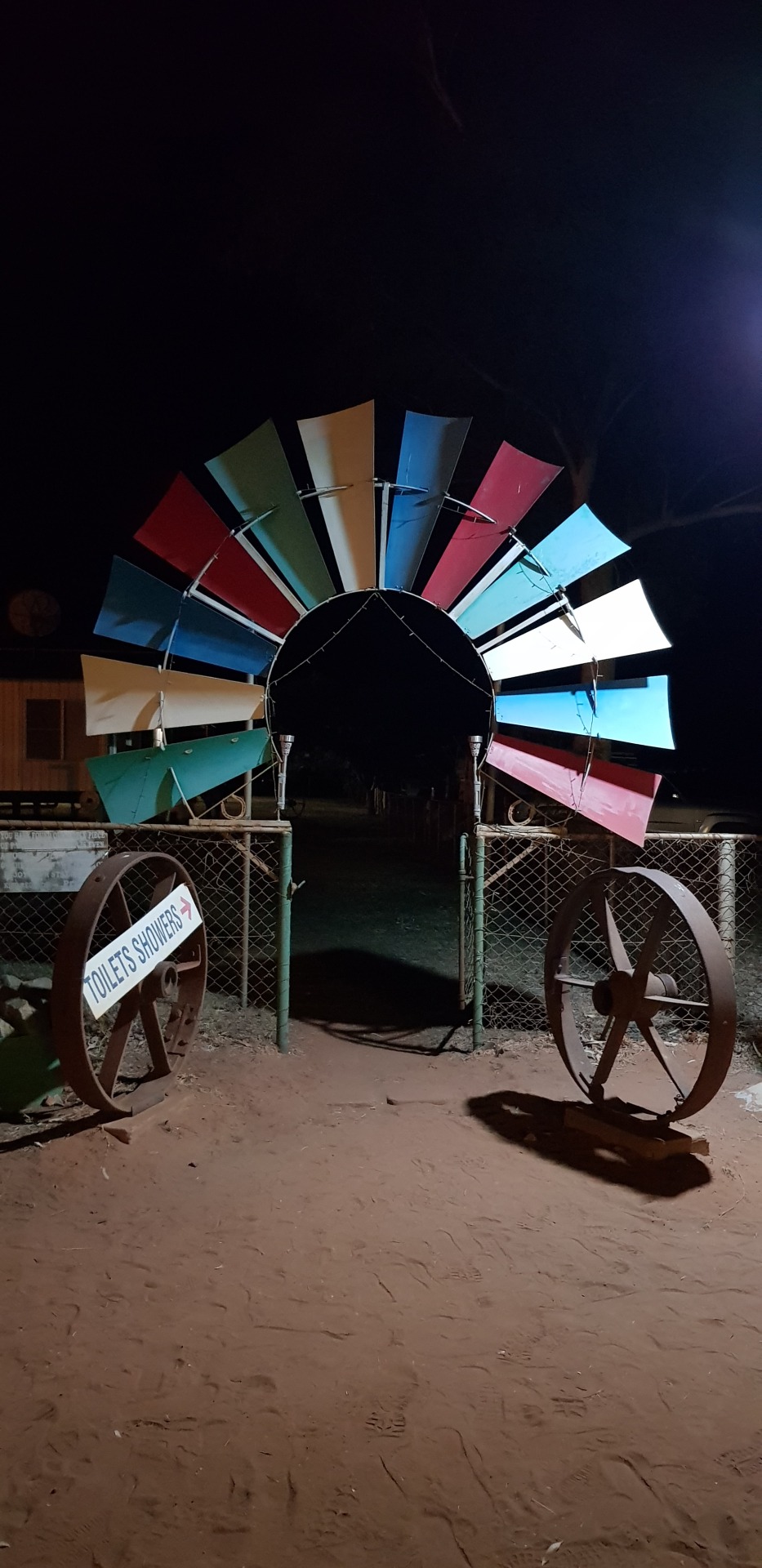
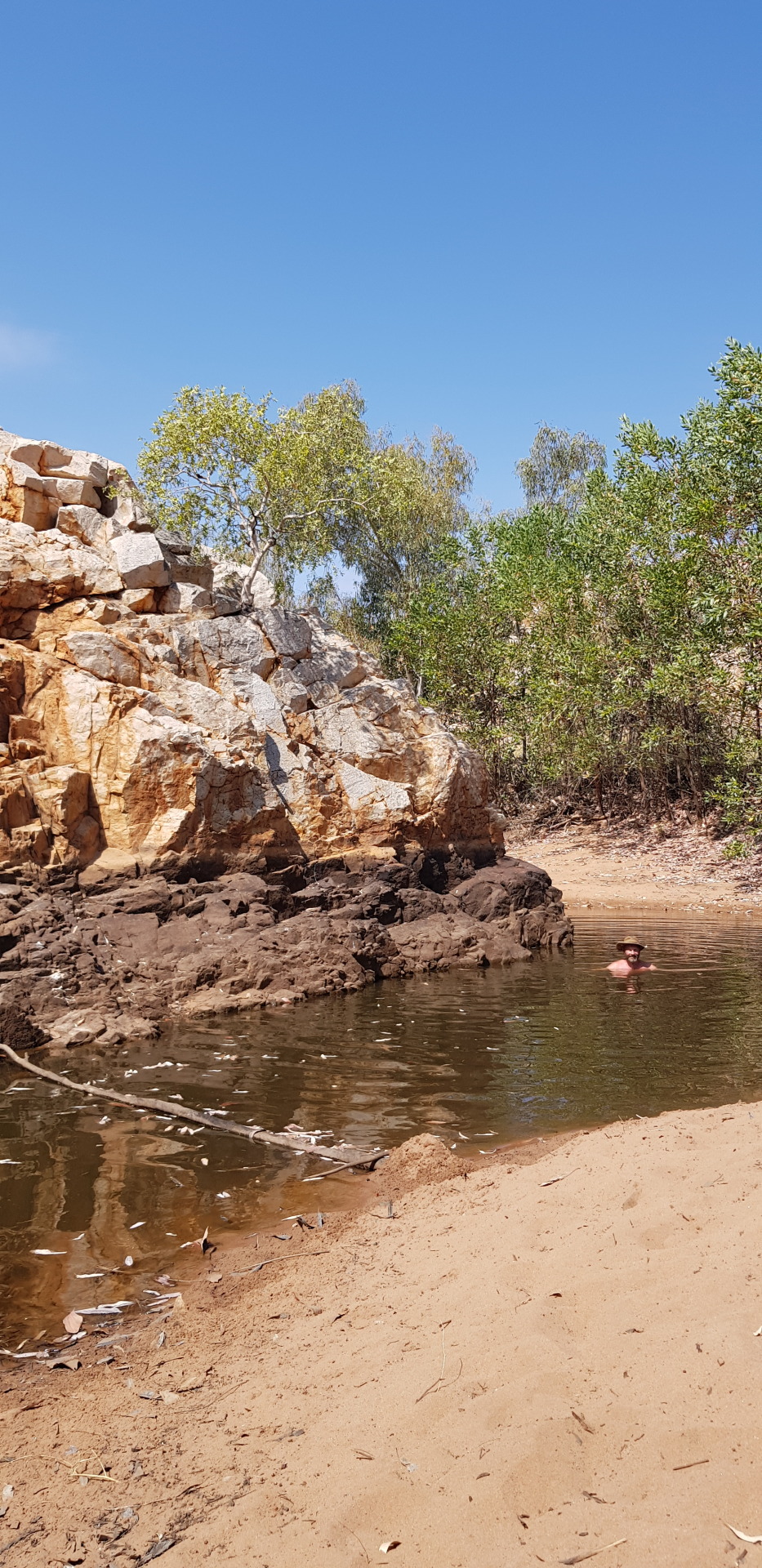
1 note
·
View note
Text
Adios QLD
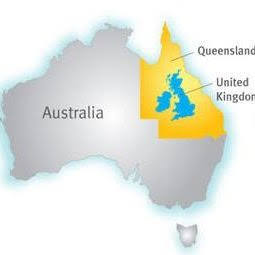
We have had a wonderful time, just shy of 8 weeks in QLD and have loved it but were relieved to cross in NT, for our alternate route home. Queensland is so vast with so much to see our favs being:
· The trees and luscious rainforests which kissed the sea. Michael was so surprised just how hilly it was.
· Expansive and mesmerising cane fields that just went on and on. We were lucky as we were there just as harvest was beginning.
· The wide open spaces of the outback and savannah land.
But there is so much more for everyone. We'll be back.
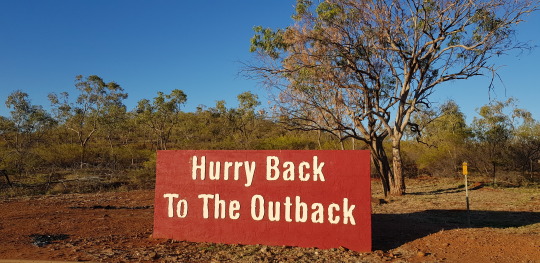
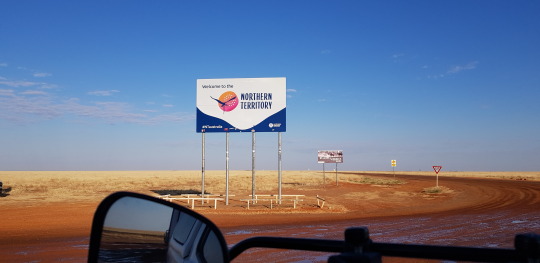
1 note
·
View note
Text
Camooweal
Camooweal was our last stop in QLD and the a suburb of Mt Isa some 190km away. It was hot and dry, and home to the Drovers' Camp. These wonderful pictures are by Yvonne Dorward of the boss drovers' of the region. It was a priviledge to learn more about their hard lives.
The origin of the town's name is uncertain but one theory is that it is an Aboriginal word meaning strong wind. It would have been a good alternative to "Hillcrest" 😊
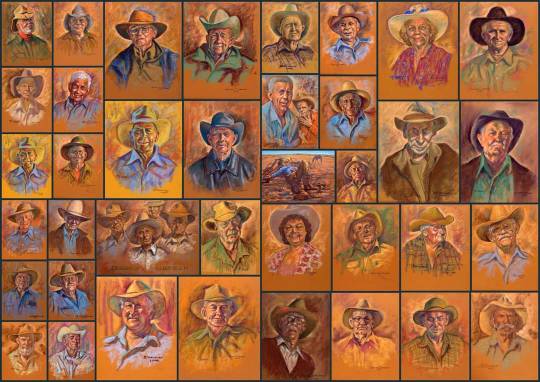
Then a great free spot down at one of the local billabongs where I have never seen so much bird life. The brolgas were so loud!
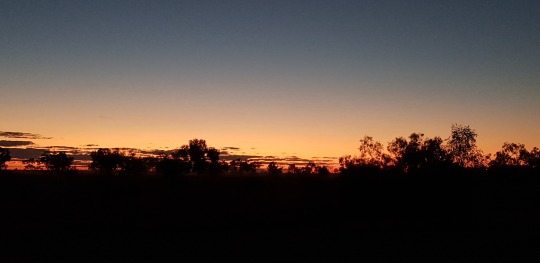
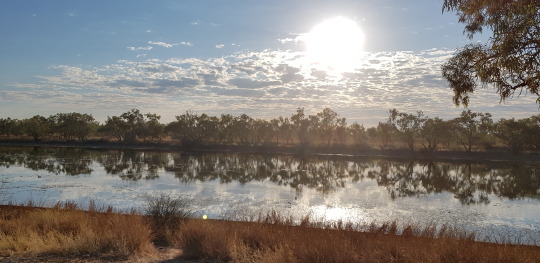
1 note
·
View note
Text
Mount Isa is a large town
Mount Isa proudly claims to be the largest city in the world, the argument being that the city extends for 40 977 sq. km, and that the road from Mount Isa to Camooweal, a distance of 189 km, is the longest city road in the world.
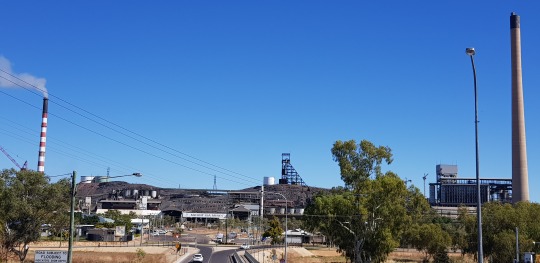
The MIM (Mount Isa Mine) dominates the city as it is right in town. MIMs operates two separate mining and processing streams, copper and zinc-lead-silver. The Enterprise mine is a major copper ore source and is Australia’s deepest mine with an internal shaft, which reaches a depth of 1,900m.
It was more a weigh point for us as we restocked and attended to repairs and servicing.
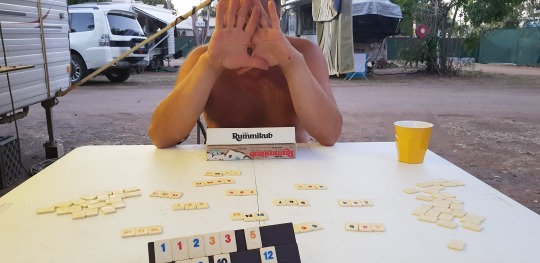
1 note
·
View note
Text
"Bloody long way for a bath"
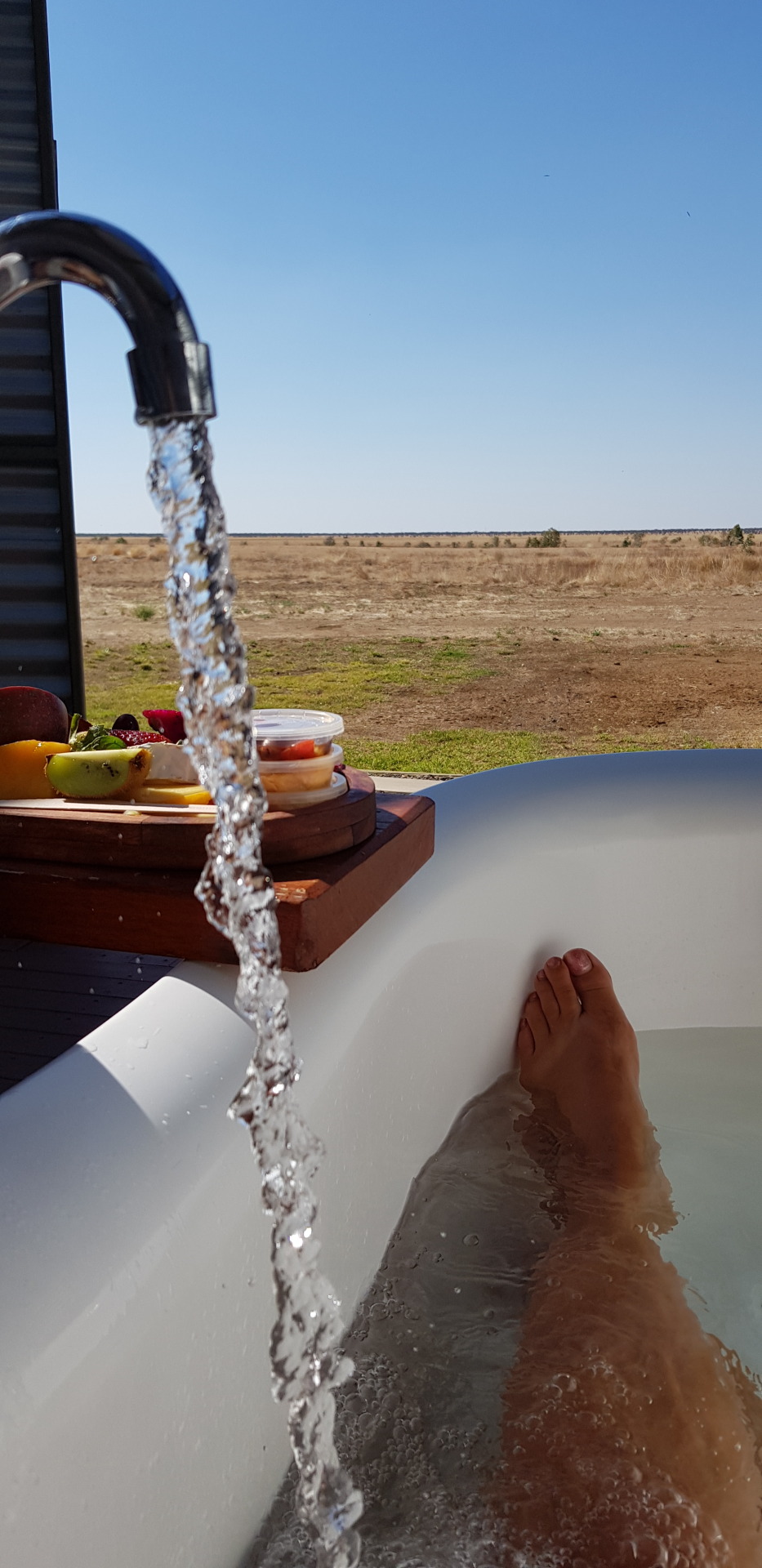
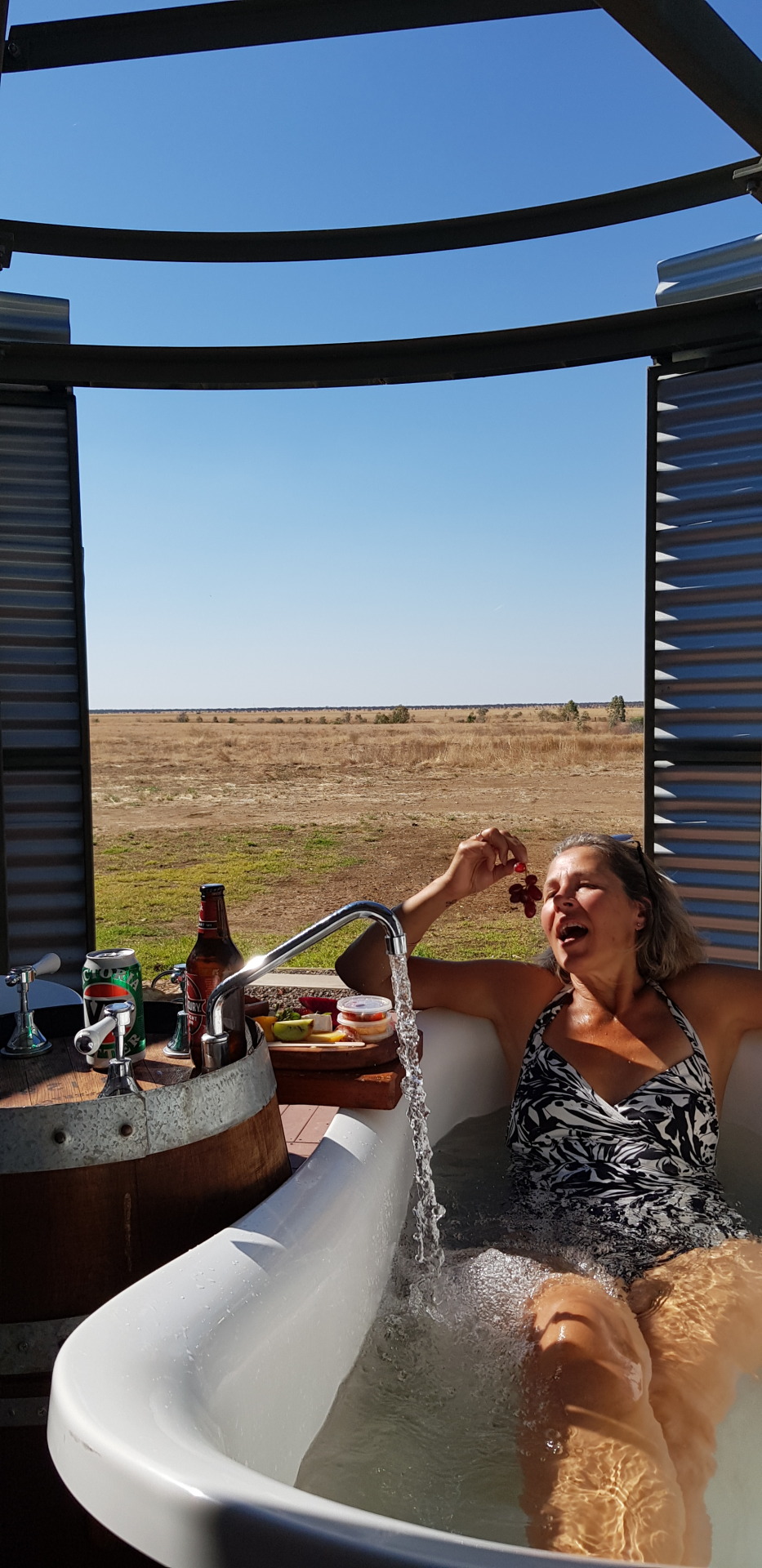
Michaels' words as we drove out for a day trip to Julia Creek some 120kms away to bath in artesian water! But it was a lot of fun.
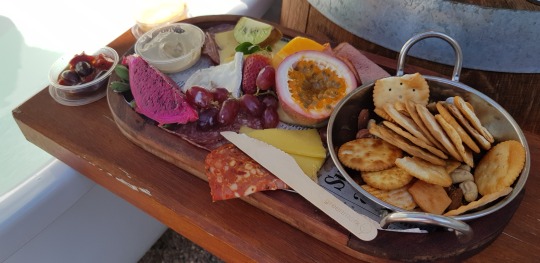
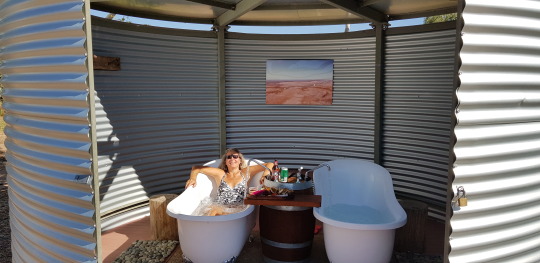
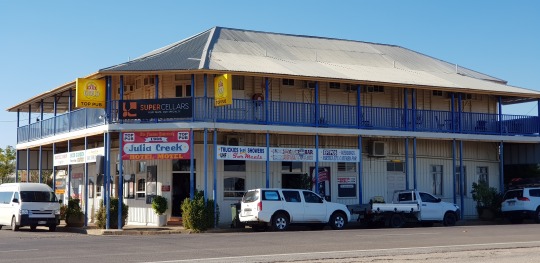
We also relaxed at their "top pub" for a cool beer. We always giggle at old signs like this "UHF 35" when truckies called in their meals before mobiles.
Quaint town and great services, will visit again one day. We also got to see the super cute and fast Julia Creek Dunnart which was thought to be extinct in the 1930s until it was rediscovered in the 1992. This little fella runs around 10km a day.
0 notes
Text
No curries at "The Curry"

The Curry', as Cloncurry is affectionately known by locals, is most famous for being the birthplace of the Royal Flying Doctor Service (RFDS). Even the latest ser i es of Survivor just wrapped up being filmed there.
These days it is an thriving mining hub and administrative centre for mining and cattle country. Hot dry country with lots of mining traffic and great history.
Love this mineral rock at “Unearthed” which reminded me of a chicken snitzel!
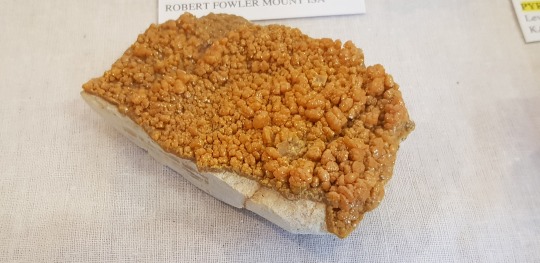
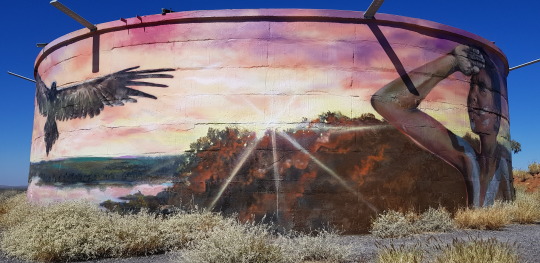
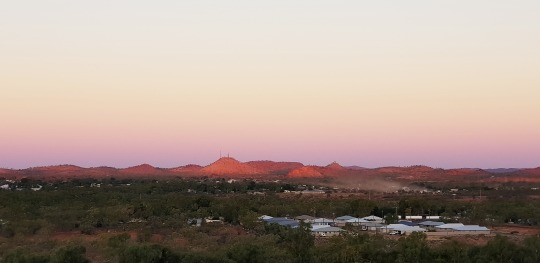
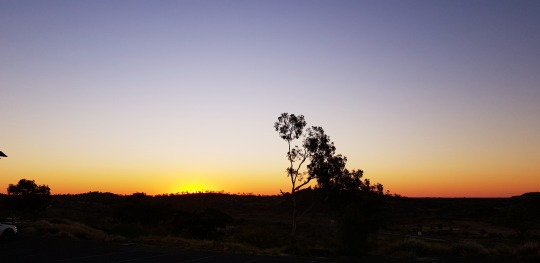
1 note
·
View note